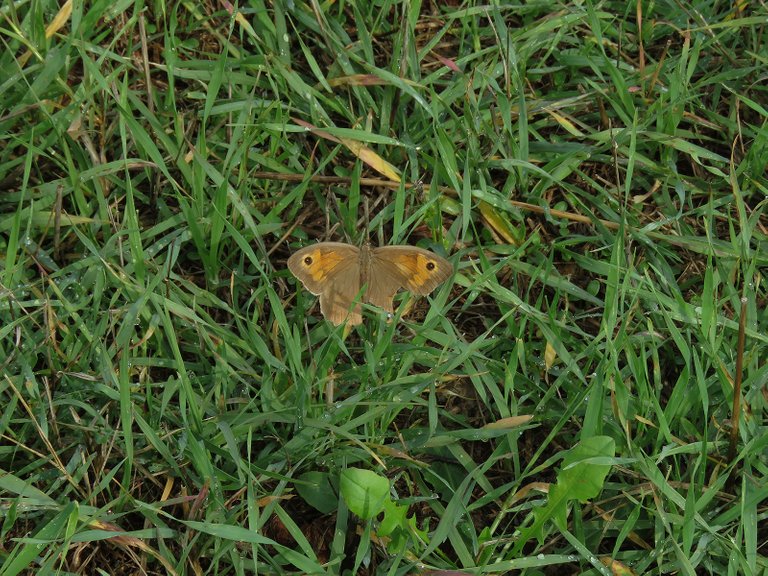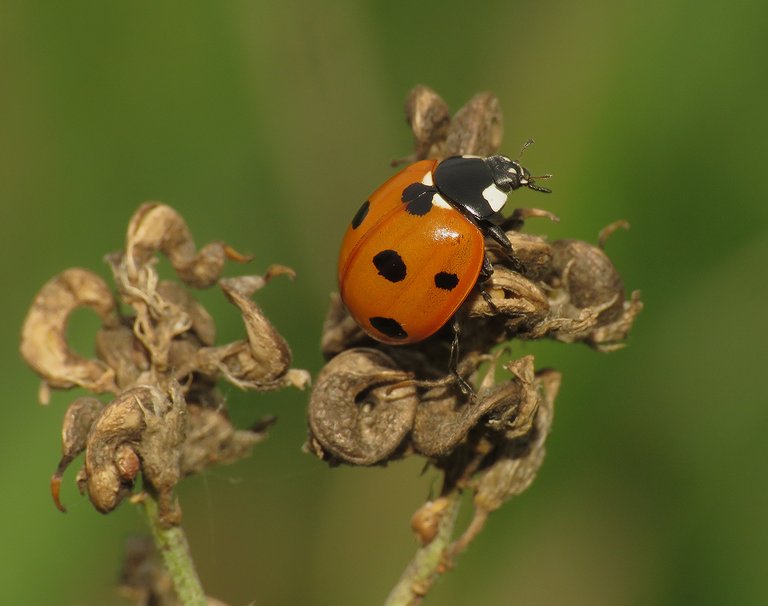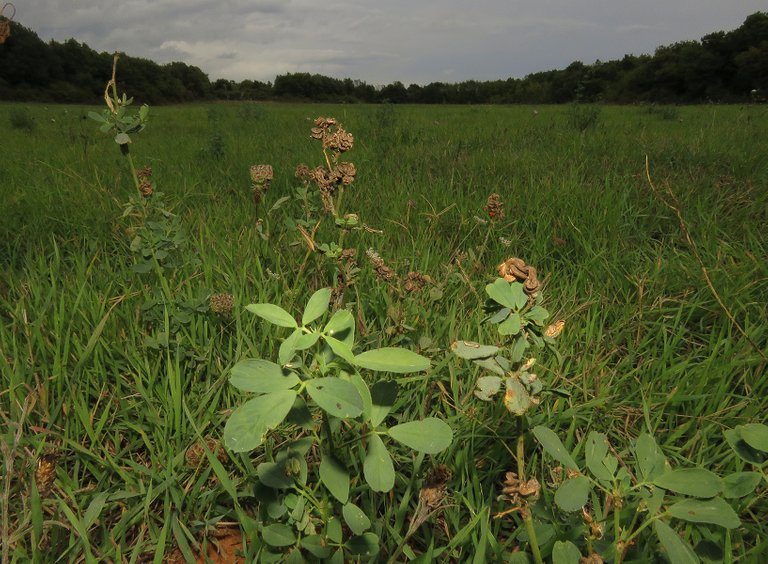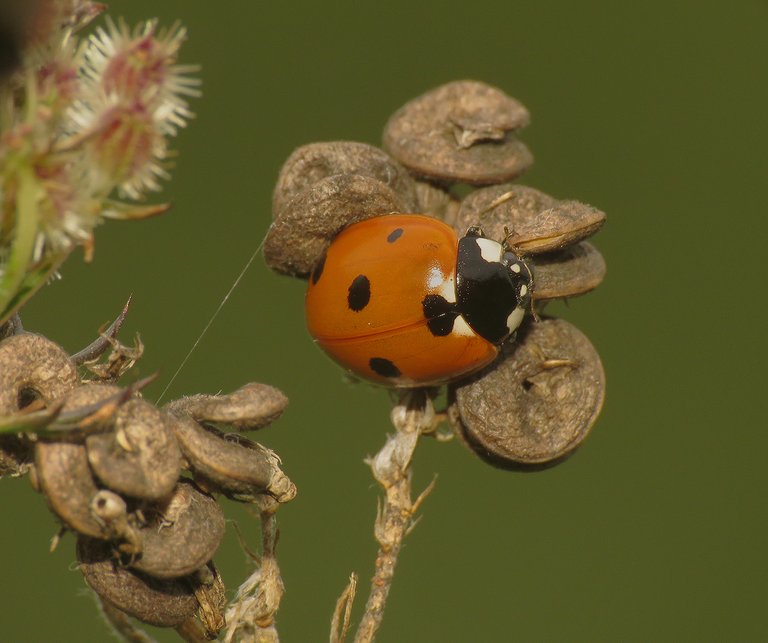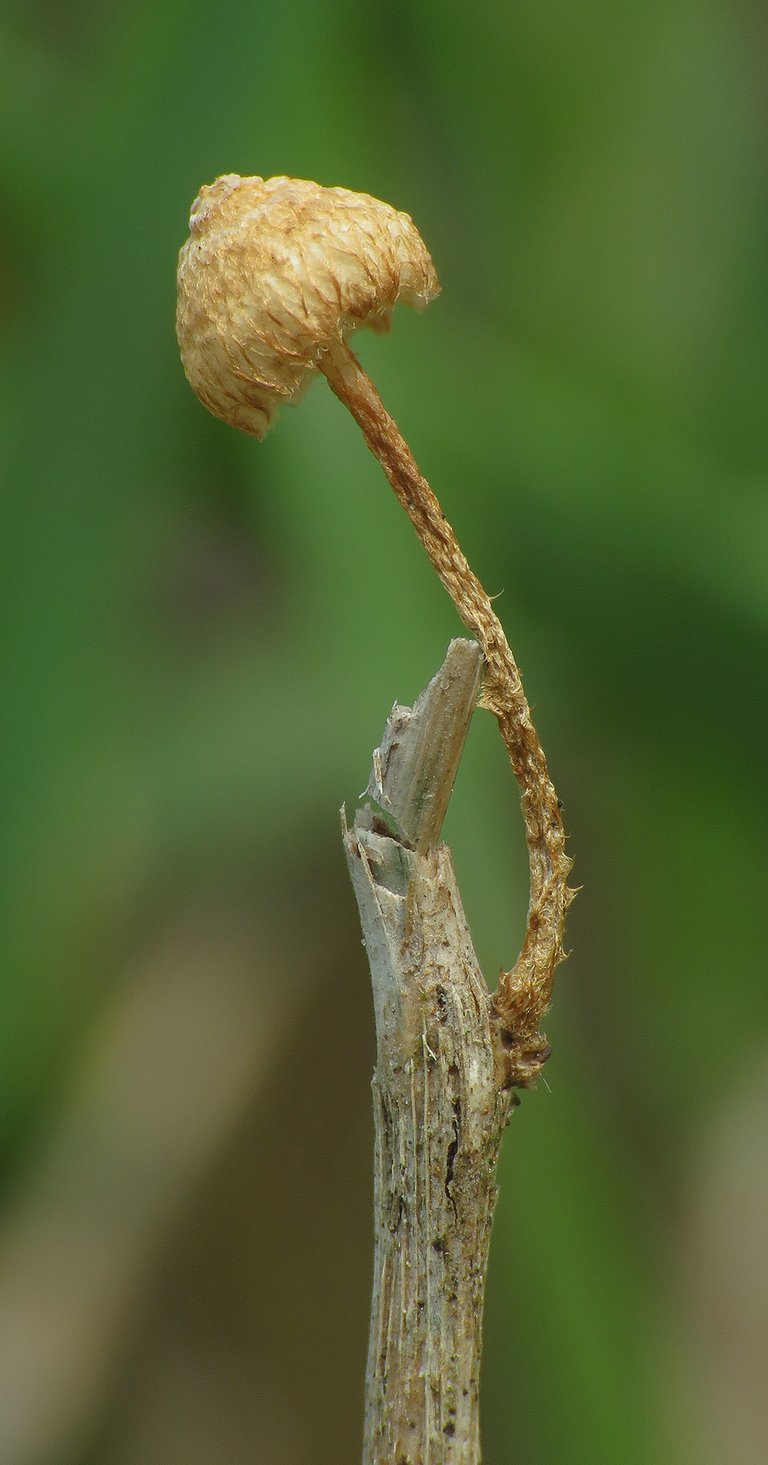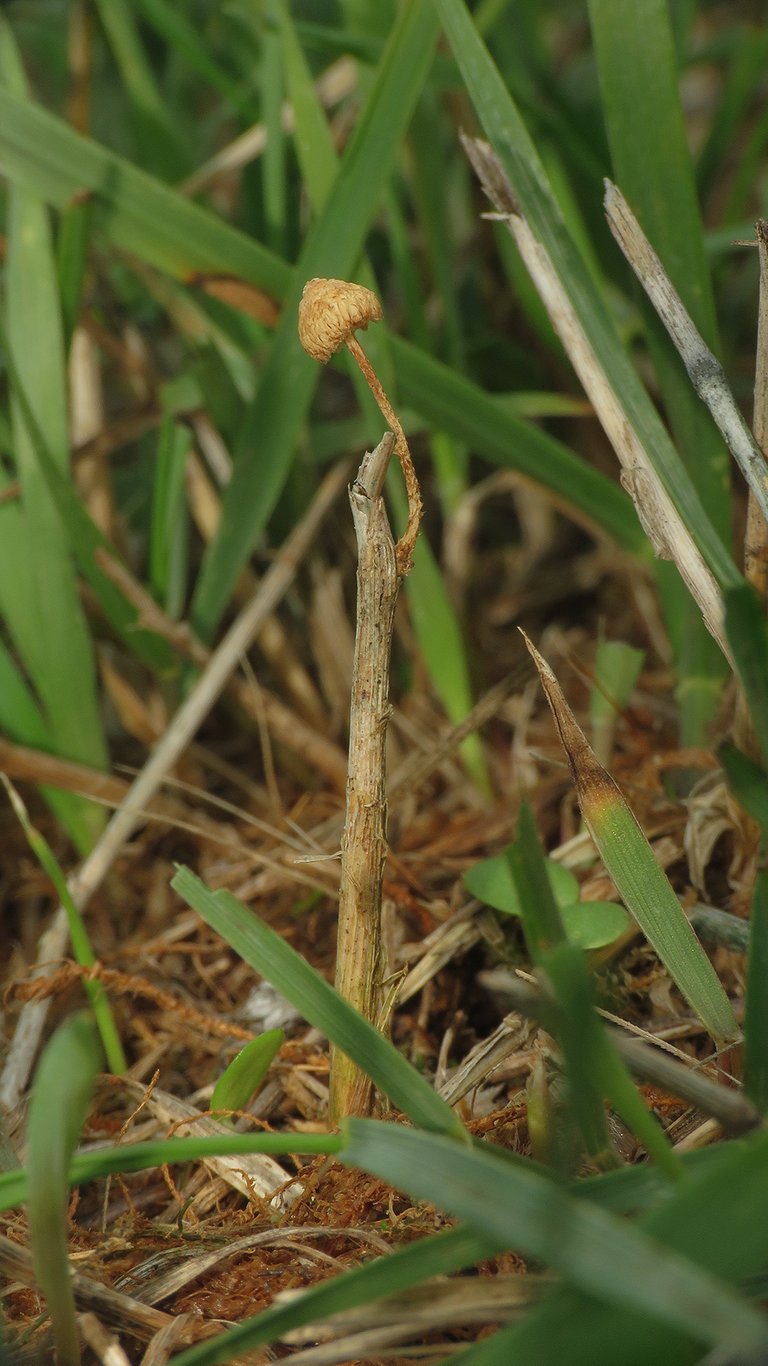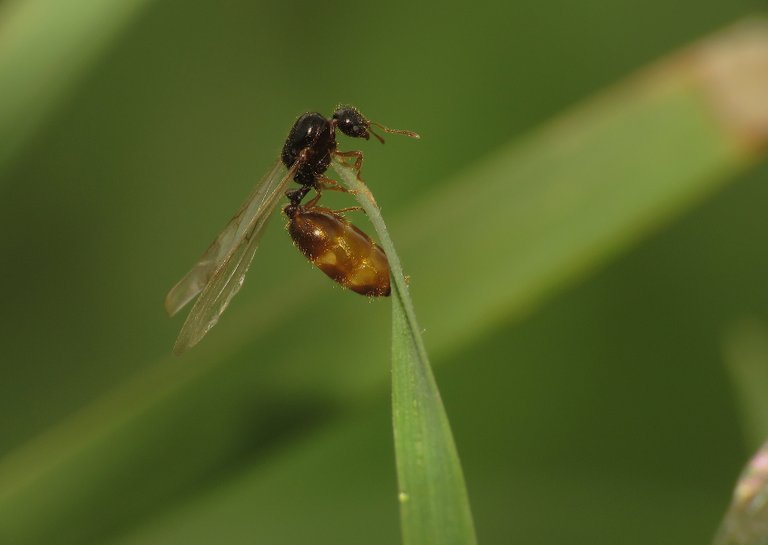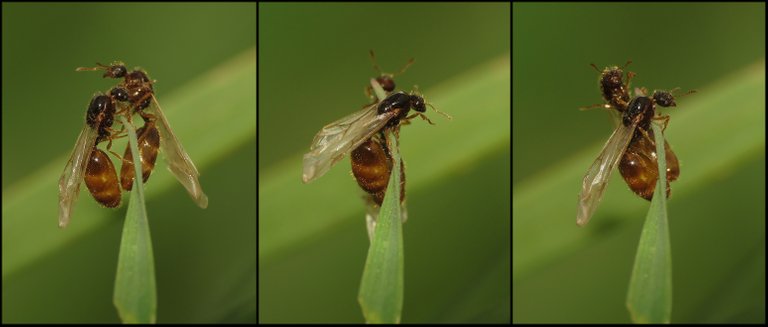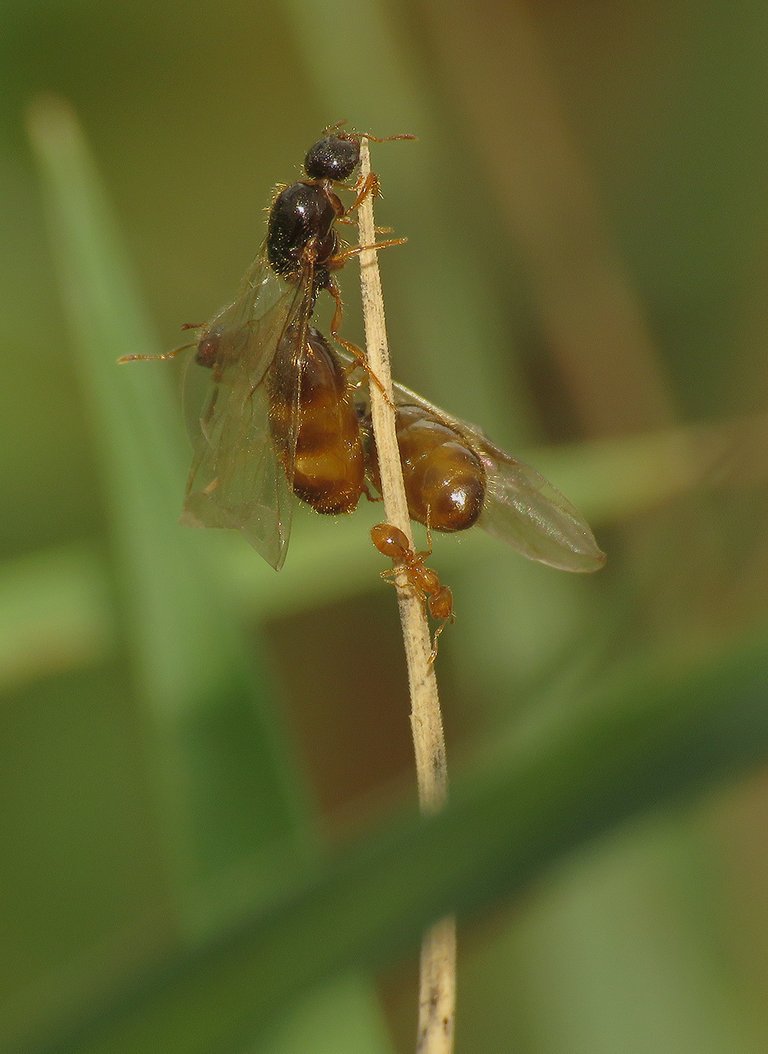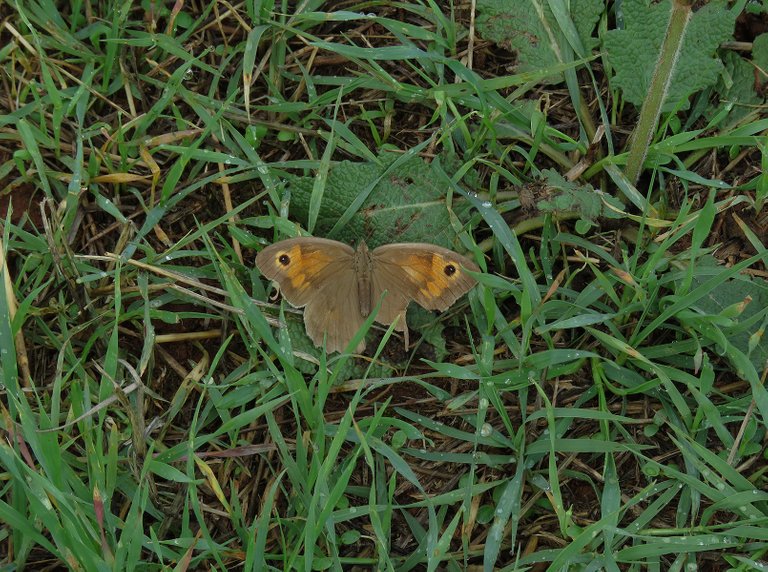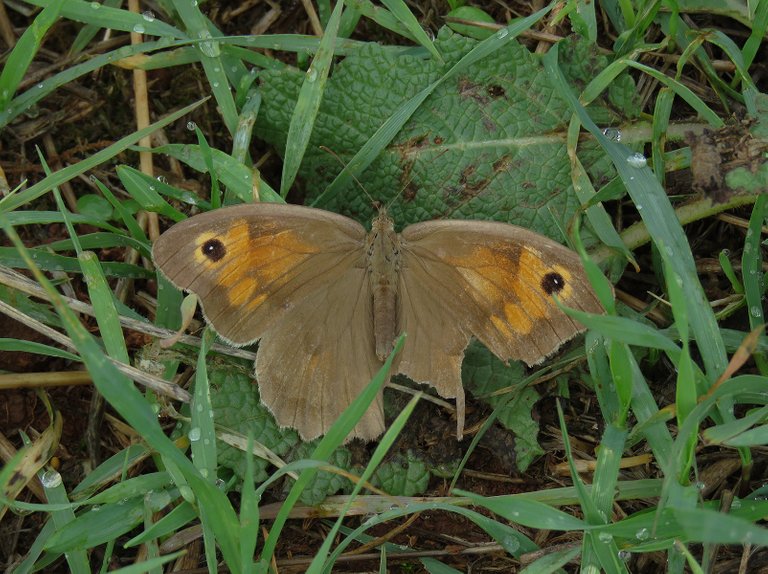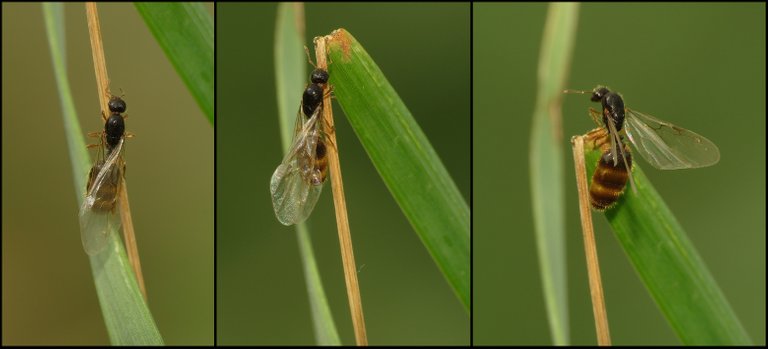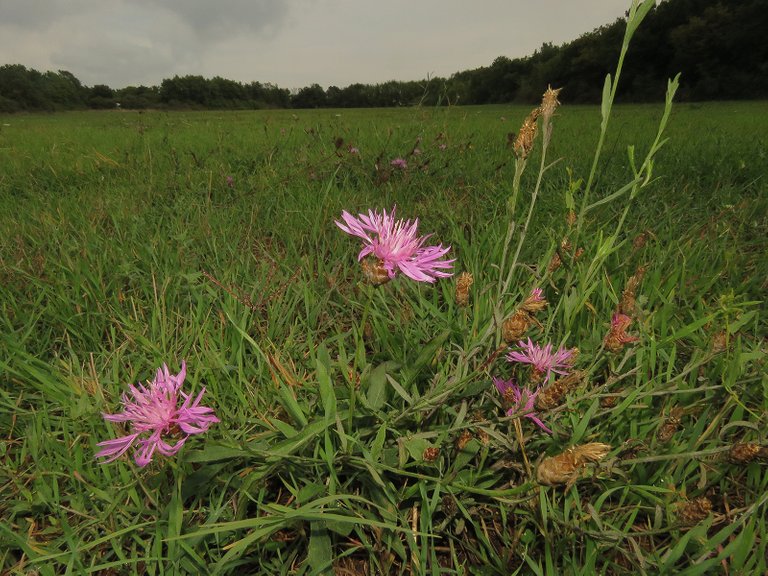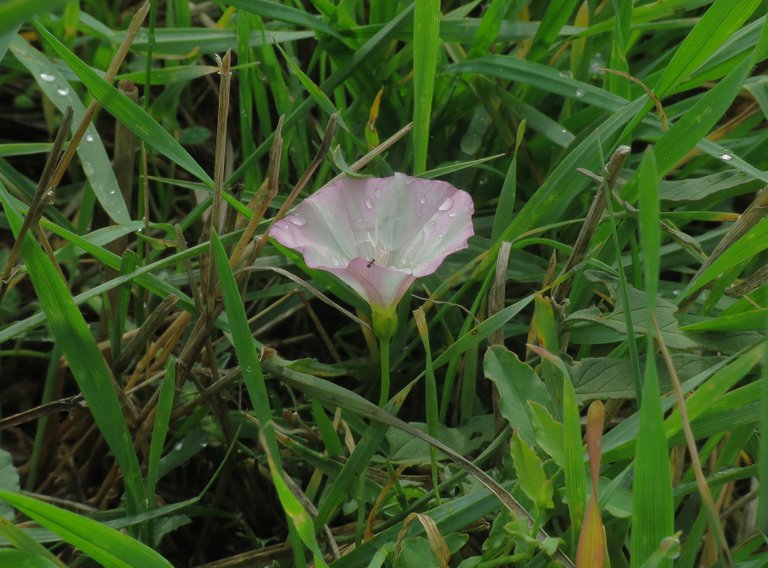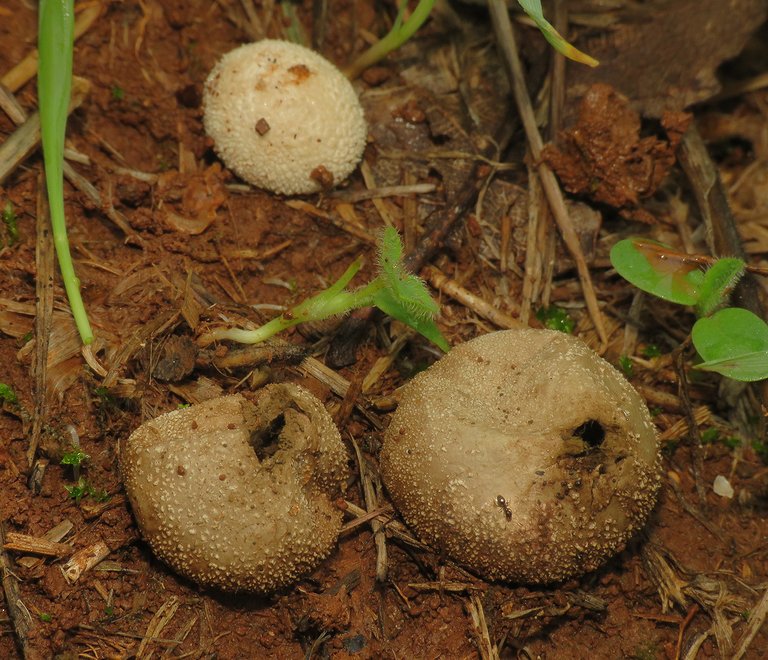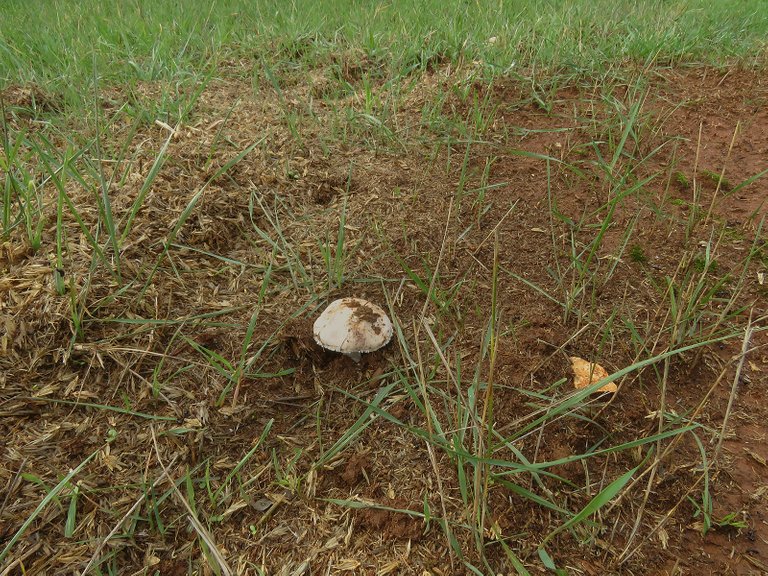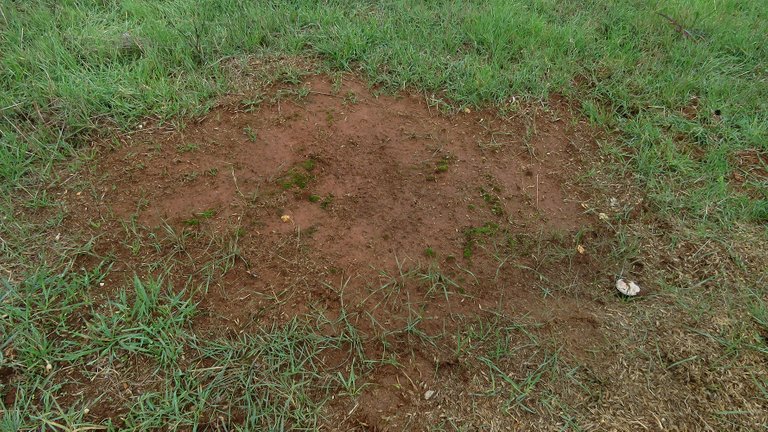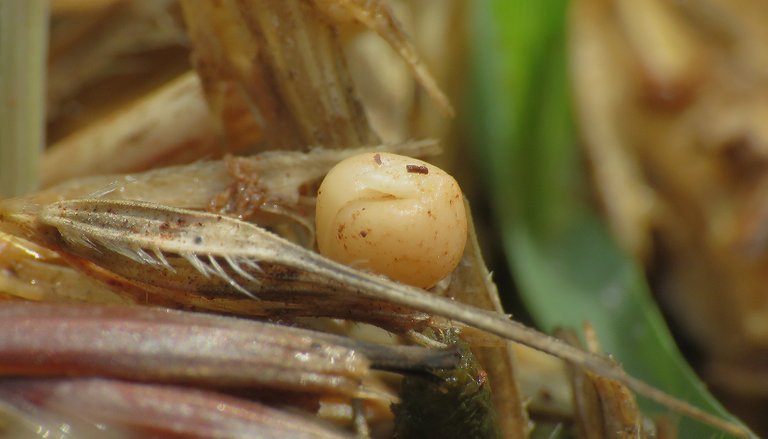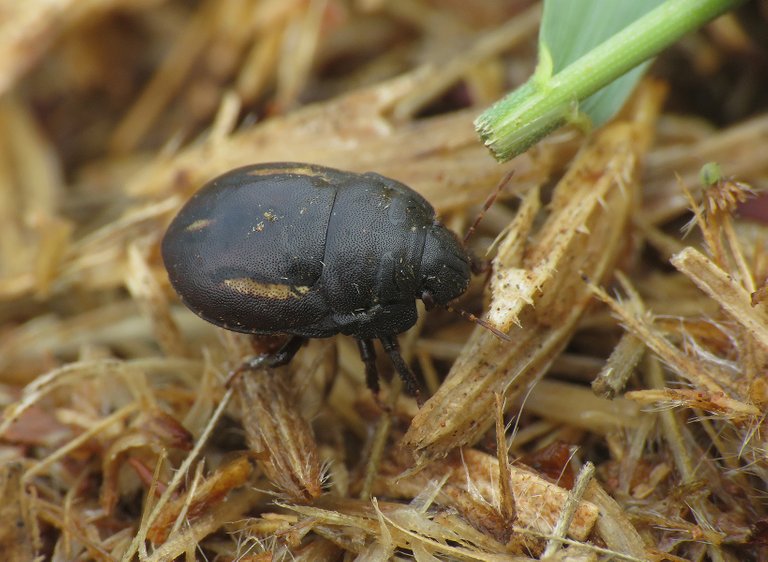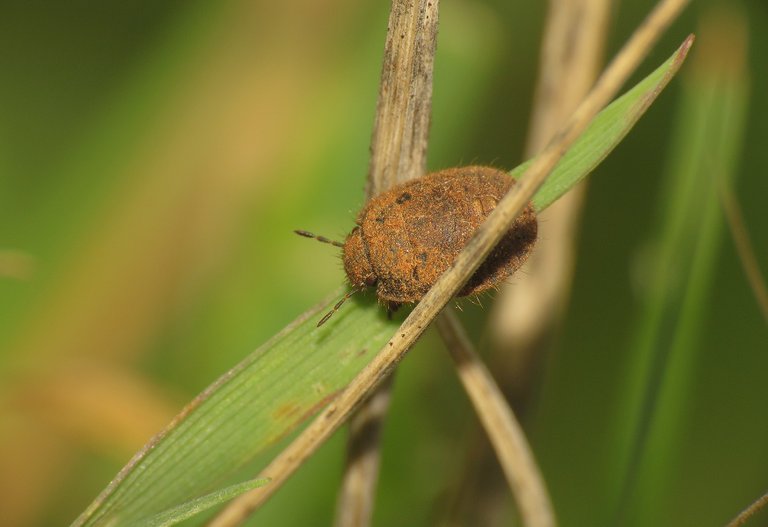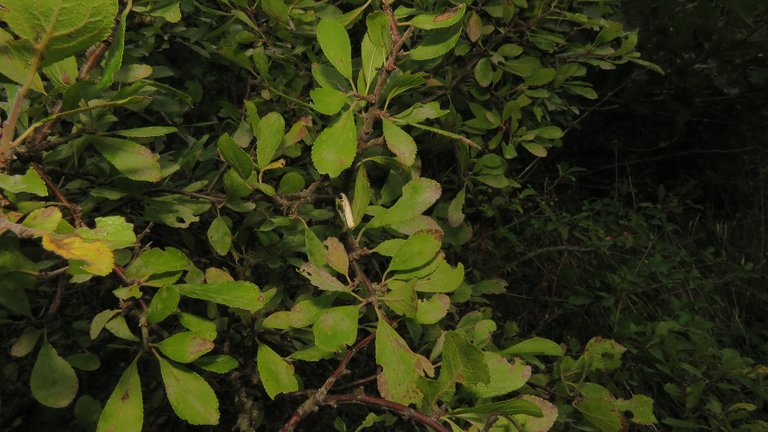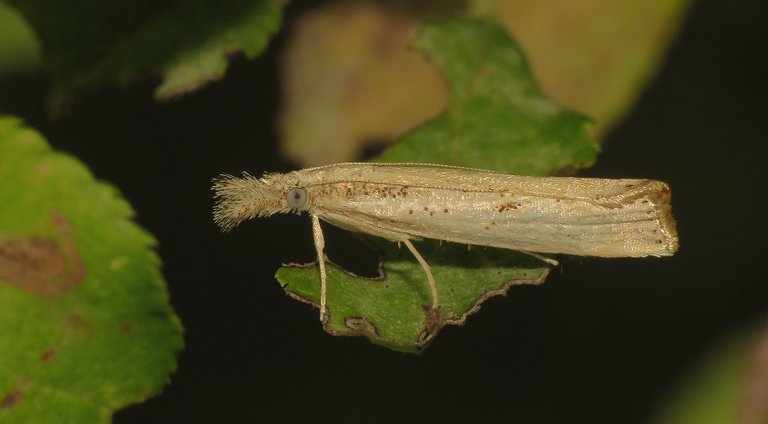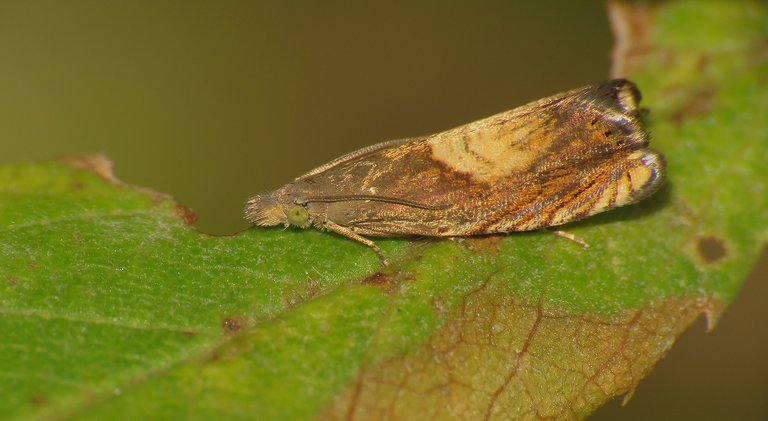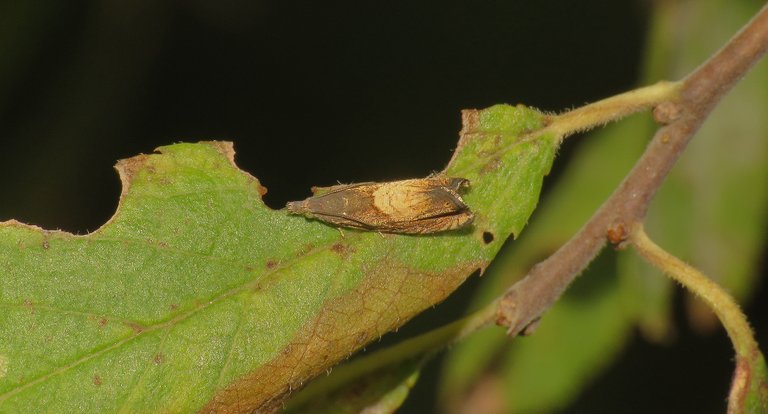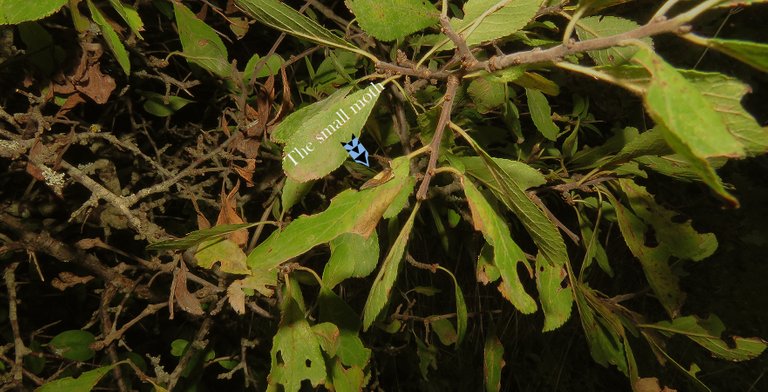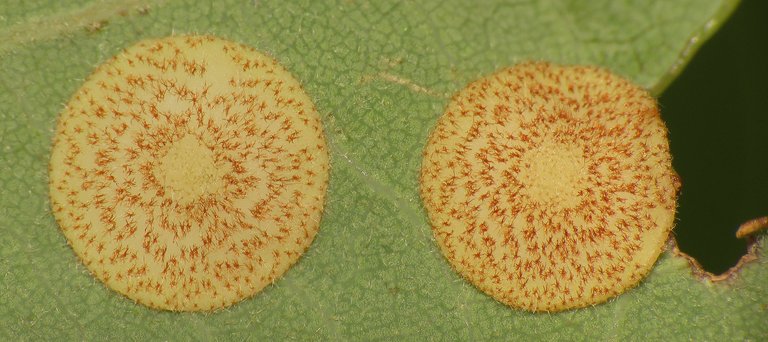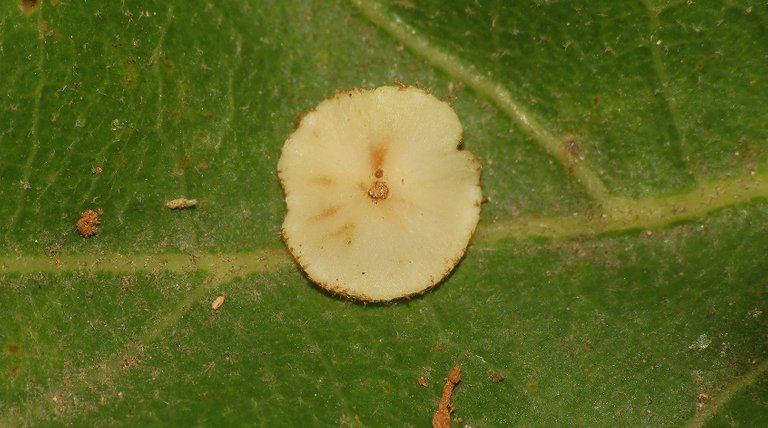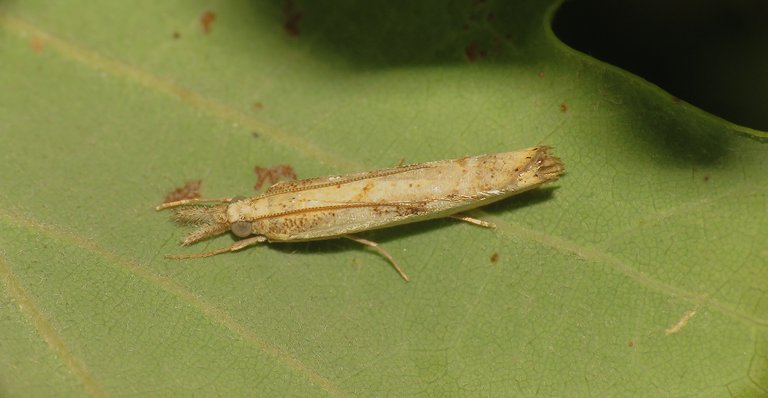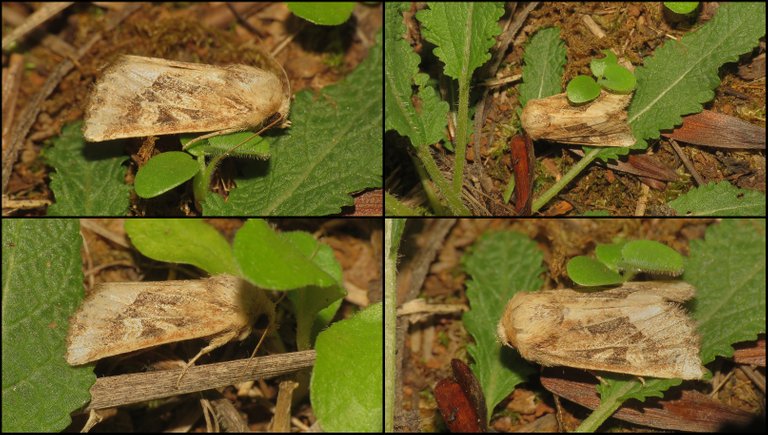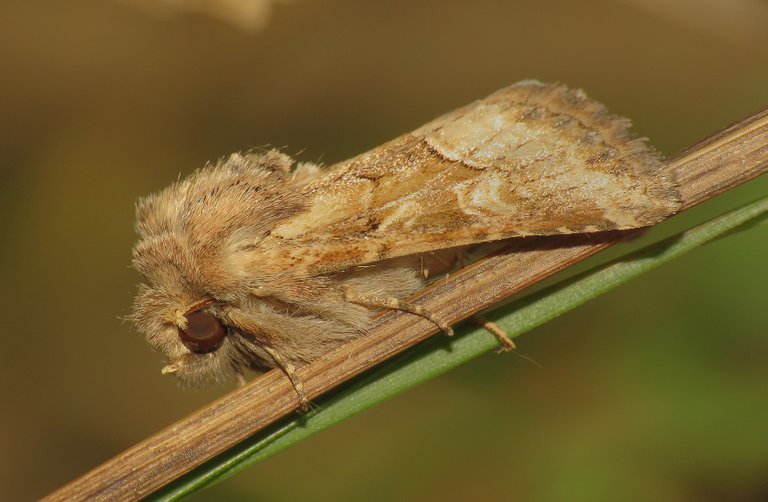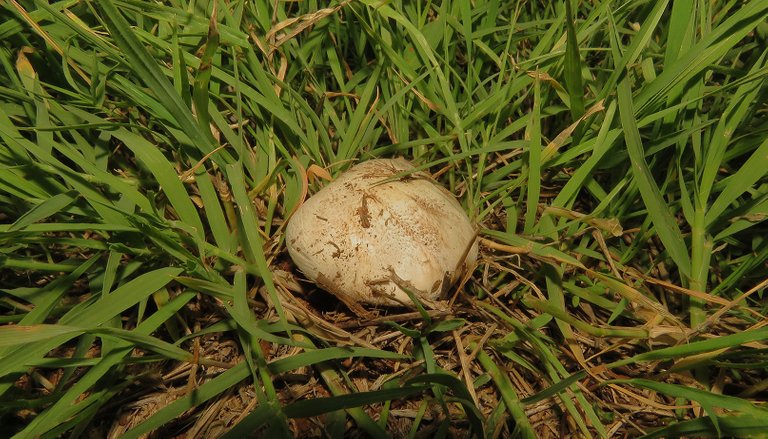The 26th of September 2022 was a warm, but cloudy and humid day. I drove about five kilometers to one of the meadows along the road between my hometown and one of the neighboring villages and spent a couple of morning hours searching for insects and whatever nature has to offer there.
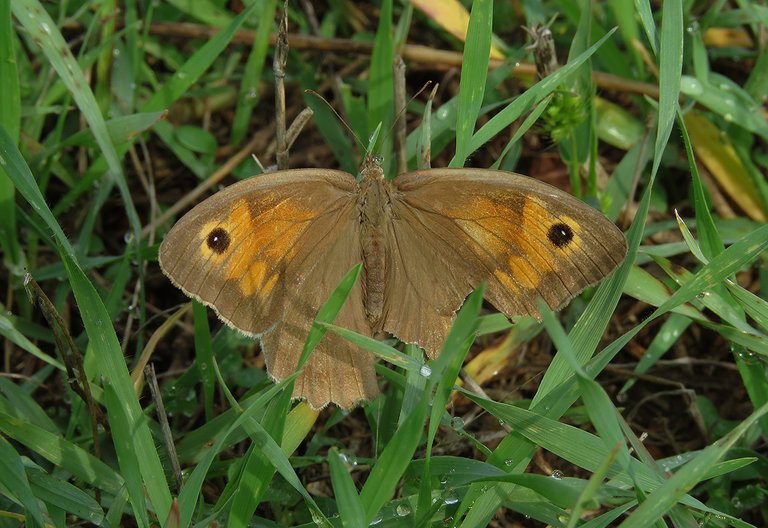
In this opening photograph, you can see a butterfly.
One of quite a few meadow brown butterflies (Maniola jurtina) that were resting on the humid grass.
About twenty meters further along the edge of the meadow, I found a beetle from the Coccinellidae family.
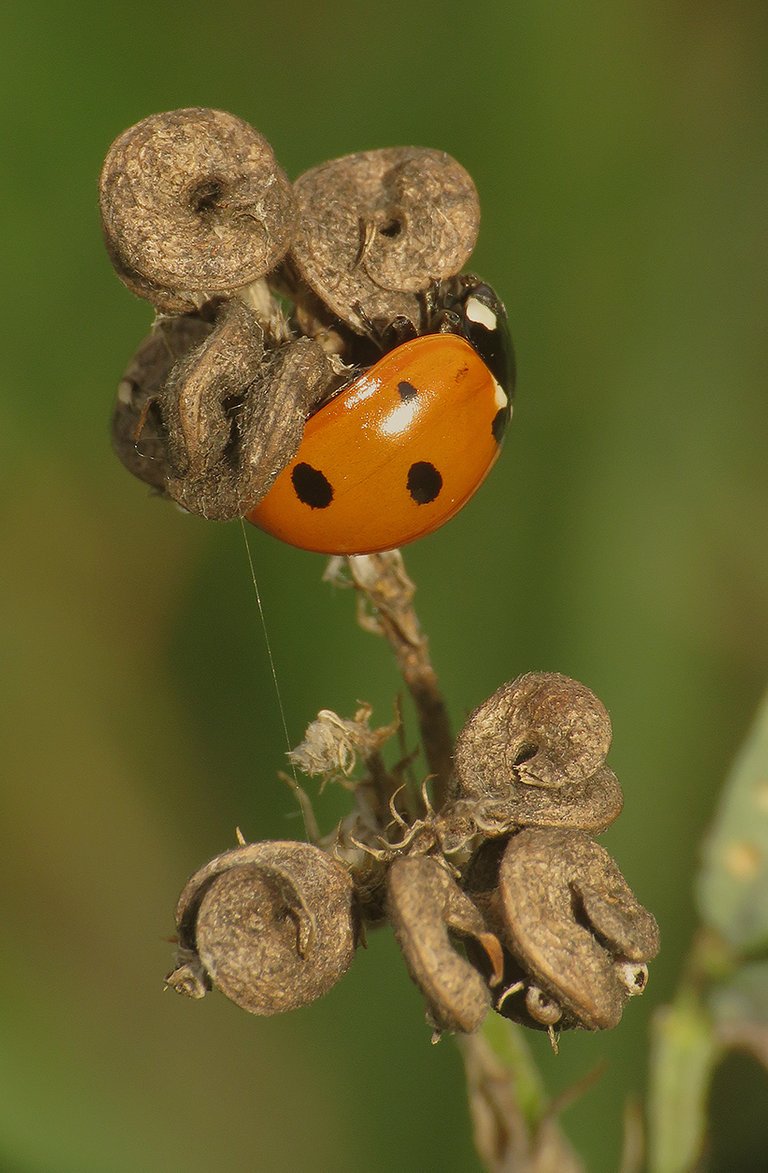
This seven-spot ladybird (Coccinella septempunctata) ...
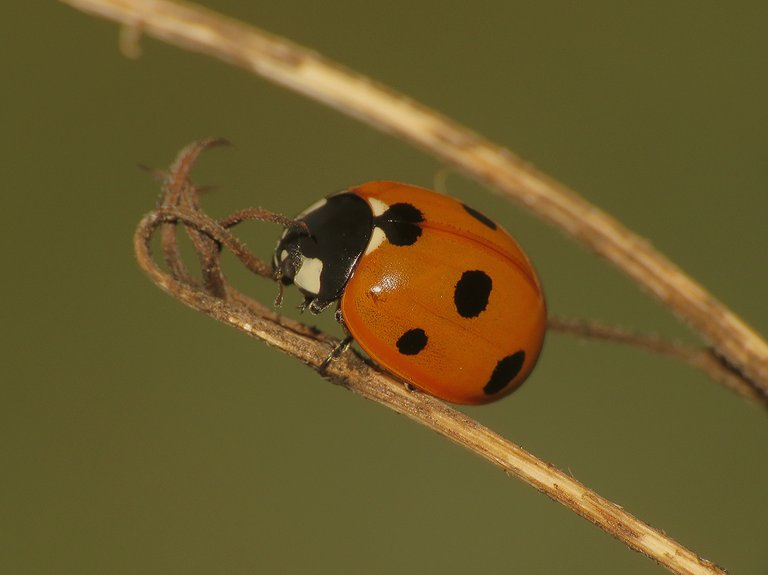
... was climbing the dried-out parts on the top of the Medicago scutellata. In the following photograph ...
... you can see the entire plant and the meadow around it.
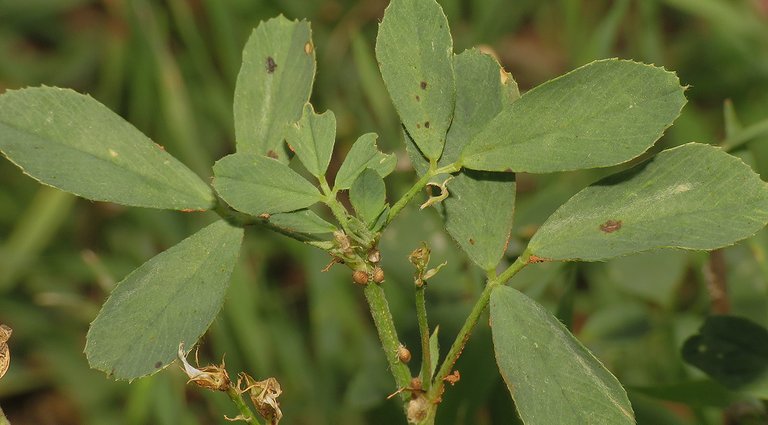
Here you can take a better, more up-close look at the green leaves, while in the following macro shot ...
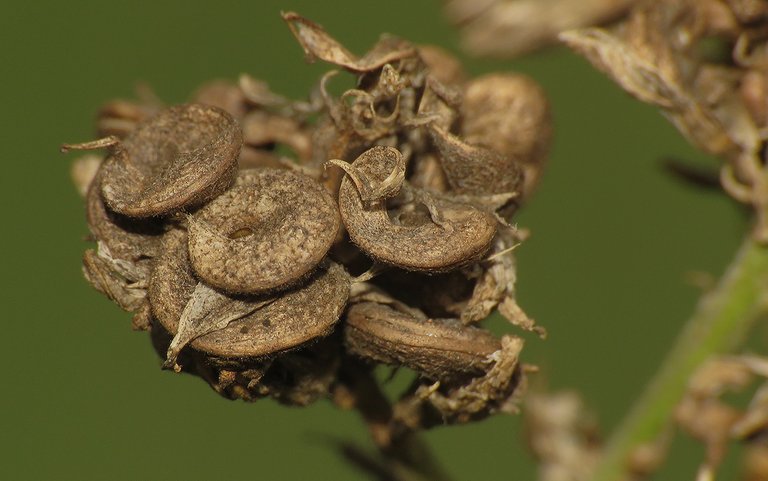
... the focus is on the dried-out, hardened fruits that hold the seeds.
Here the beetle gives a nice doze of attractive color to those brown fruits. In the following photograph ...
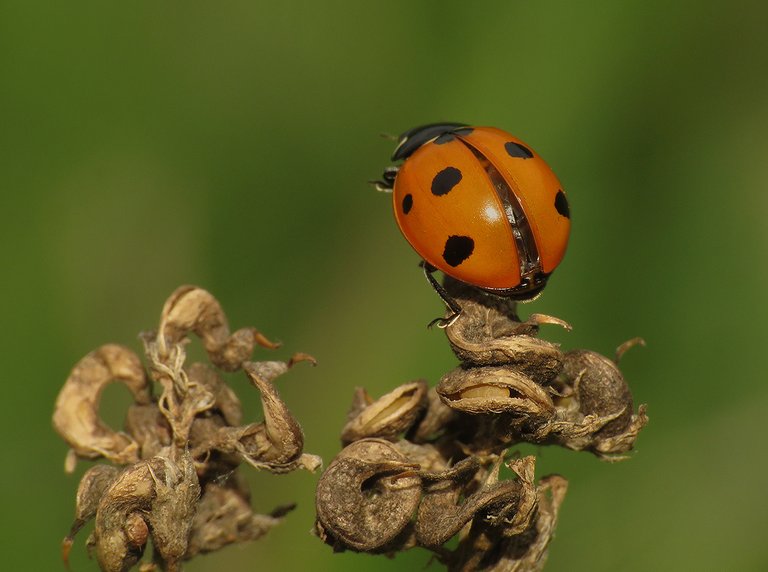
... the ladybird is ready to fly away.
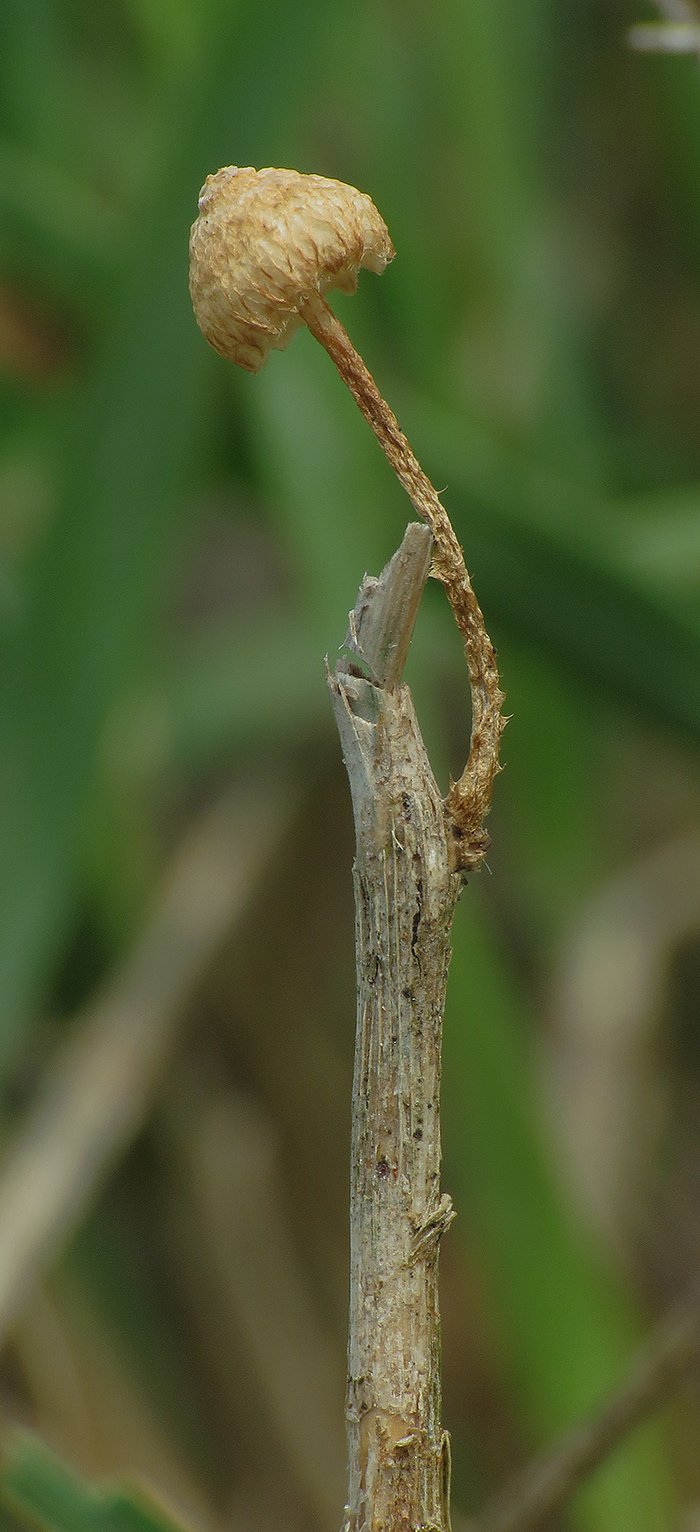
A couple of minutes later and only five or six meters further ...
... I found a Crinipellis scabella mushroom that grew on the dry straw surrounded by fresh green grass.
It was a very small mushroom, nicely camouflaged in its environment, and therefore it was hard to notice. While I was busy getting a good portrait of this mushroom through the macro lens ...

... the flying ants started appearing all around me.
Some of them landed on my head, hands, and shoulders.

These are reproductive kings and queens of the Solenopsis fugax.
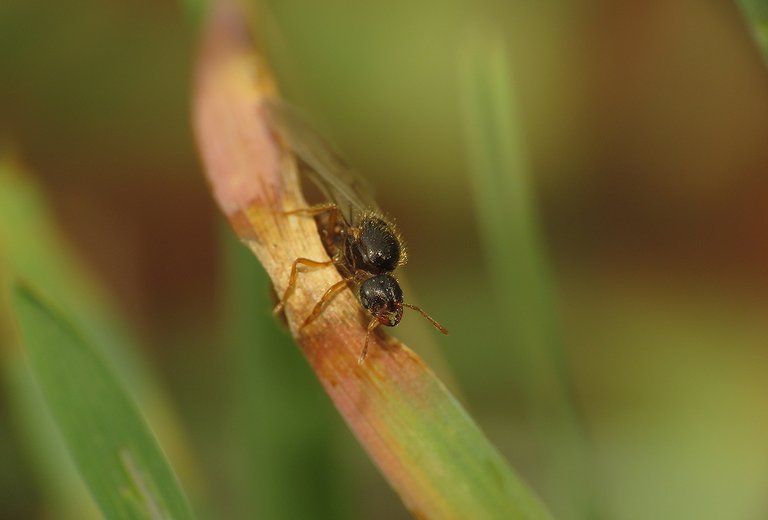
Solenopsis fugax is a species from the Formicidae family.
These reproductive males and females are much bigger than other ants in the colony.
In this photograph, especially if you enlarge the image by clicking on it, you can see one of the tiny workers that were busy helping the future queens climb the stems and leaves of the grass.
Meanwhile, about ten to fifteen meters from there ...
... the same butterfly that started this post was resting on the pretty large leaf of the Salvia verbenaca plant.
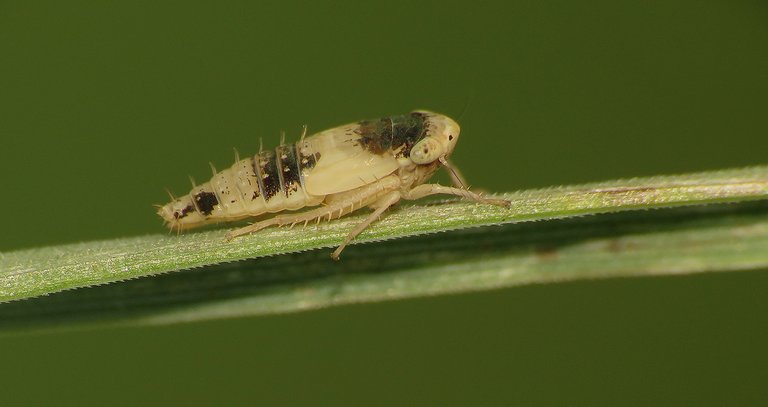
On the leaf of grass, a meter or two from the butterfly ...
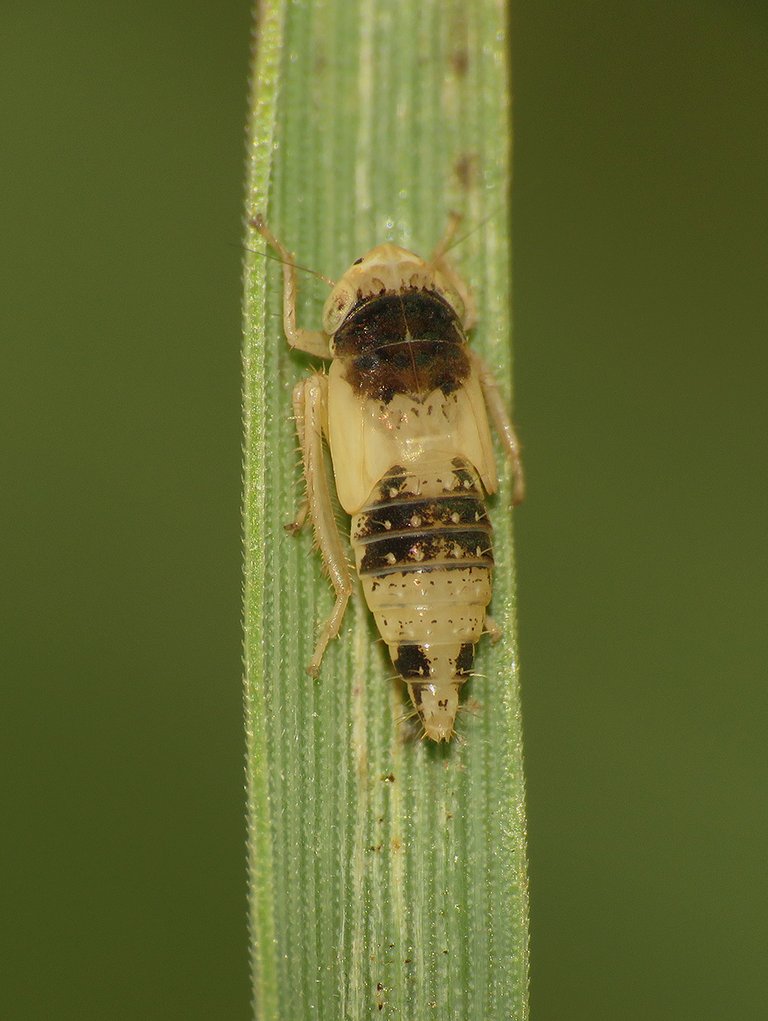
... I photographed this young, small leafhopper nymph. Can't tell you the name of the species. The family is Cicadellidae, of course. In the following triptych ...
... the focus is on the ants again.
They were constantly moving and following that action through the macro lens wasn't easy but it was kind of entertaining at the same time so I took plenty of photographs. In this shot, the wings of the ant look especially good.
In this triptych, a winged queen was getting ready to take flight. Despite the elegant wings, these ants are clumsy flyers.
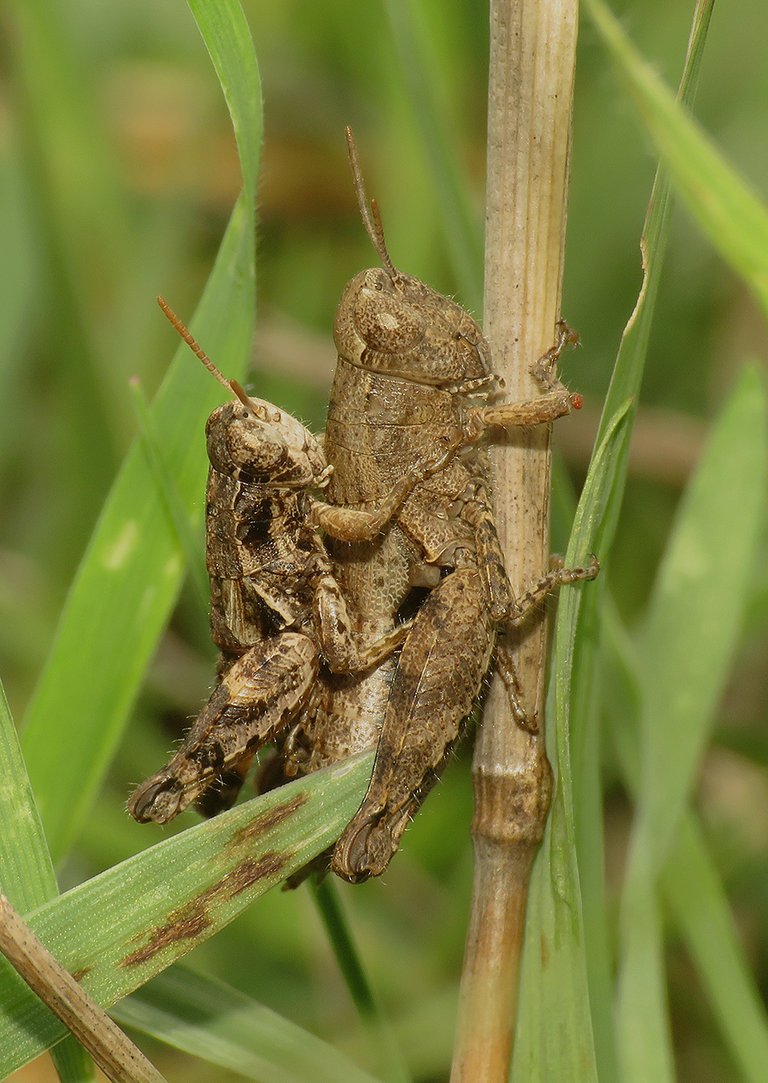
Here you can see a mating pair of Pezotettix giornae grasshoppers. Adults of this wingless species from the Acrididae family look a lot like nymphs. Only when I see them mating, I'm sure that I have completely developed insects in front of the macro lens.
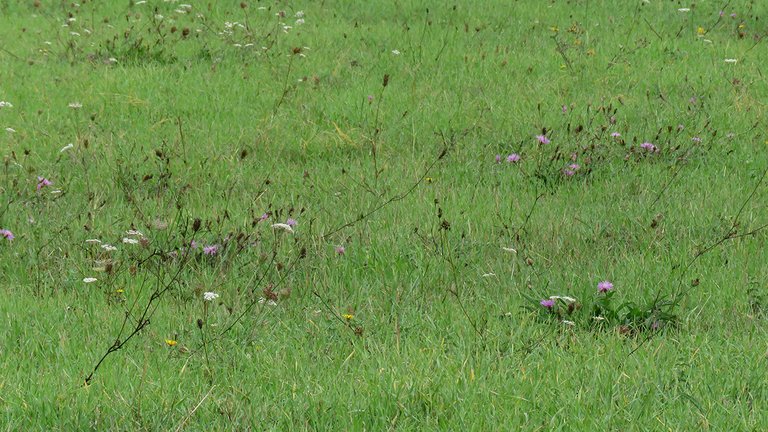
Various flowers were sparsely scattered across the green meadow. In the following photograph ...
... the focus is on the Centaurea nigrescens plant in bloom.
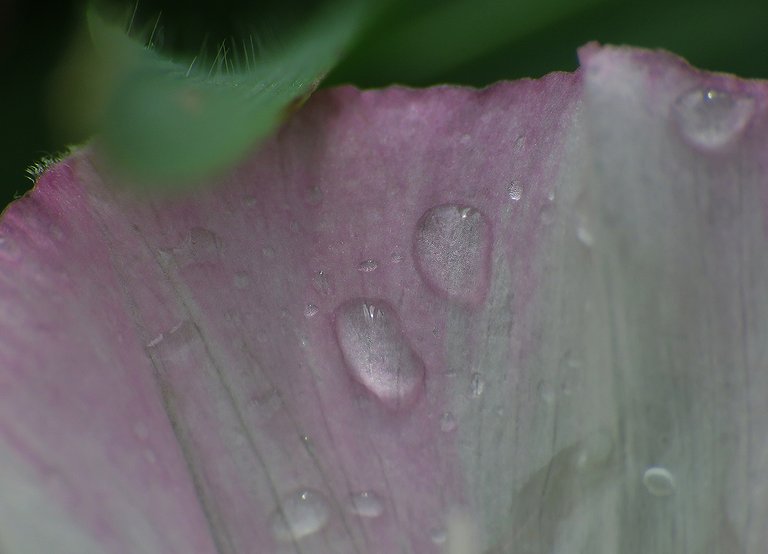
These beautiful droplets ...
... were displayed on the petals of the Convolvulus arvensis flower.

Here you can see three puffball mushrooms. One of them is young, fresh, and spongy, while the other two fruiting bodies have already produced the spores and are at the end of the cycle in this photograph.
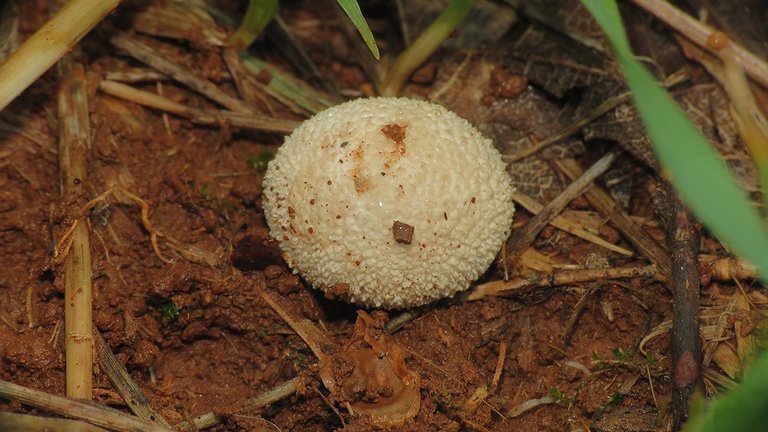
The name of the species is Lycoperdon pratense.
The ground on which these puffballs appeared is considerably different from the lush green terrain shown in the previous photographs.
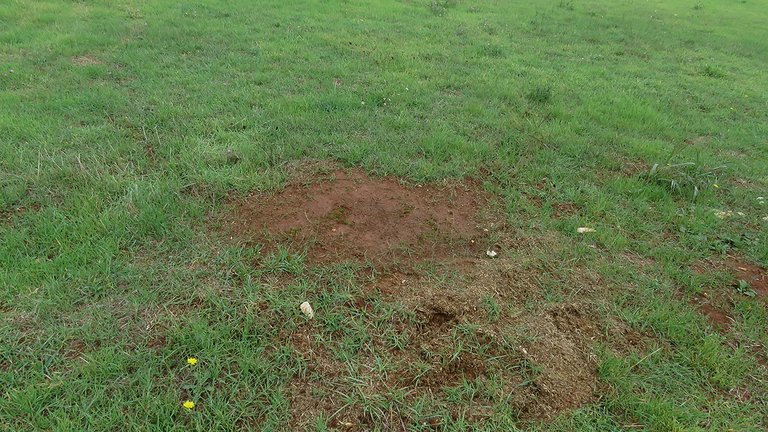
I found them near the edge of the meadow, in what looked like a small, muddy island surrounded by a sea of grass.
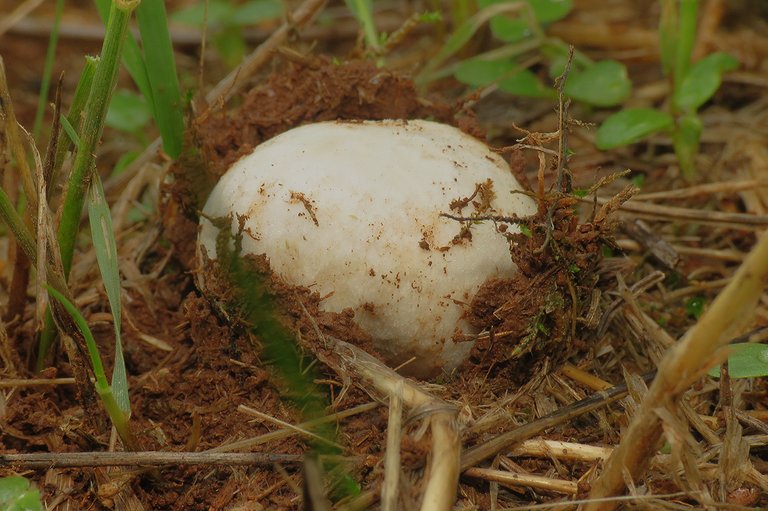
This thing looks like a puffball but is not. This is an early stage of the Agaricus campestris mushroom. In the following photograph ...
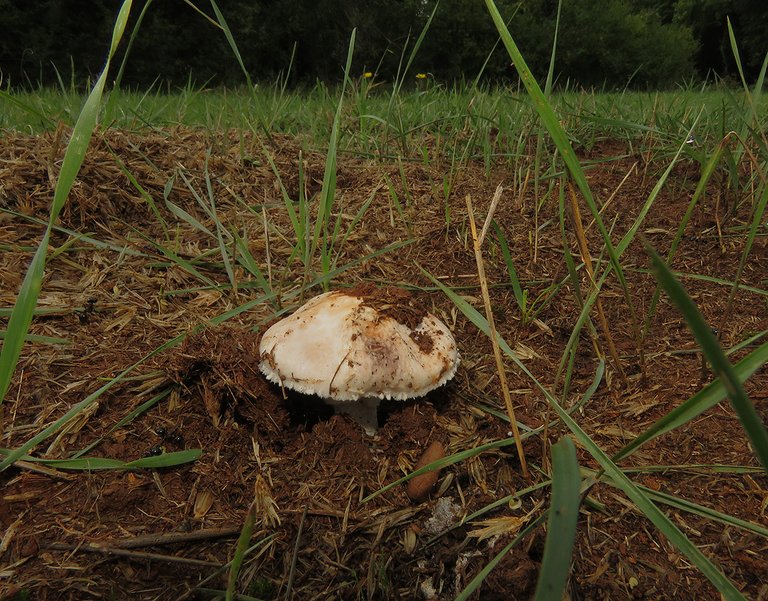
... you can see a bigger, more developed fruiting body with a recognizable stalk and the cap above it. This mushroom was photographed on the edge of the brown, muddy area surrounded by juicy green grass.
The terrain around the mushroom is covered with dried-out fragments of vegetation that look like some kind of sawdust.
That's because this place was created by ants.
The Messor wasmanni harvester ants. Here you can see one of them in action. The ants take the nutritious seeds in the underground colony while the other small fragments that hold the seeds remain outside, accumulated on the edge of the clean and barren ant's territory. It looks that the worker shown in this set of four photographs is busy searching for remaining edibles hidden in the large pile of useless stuff.
I was also searching like an ant, and I soon found something interesting there. This definitively looks like some kind of seed.
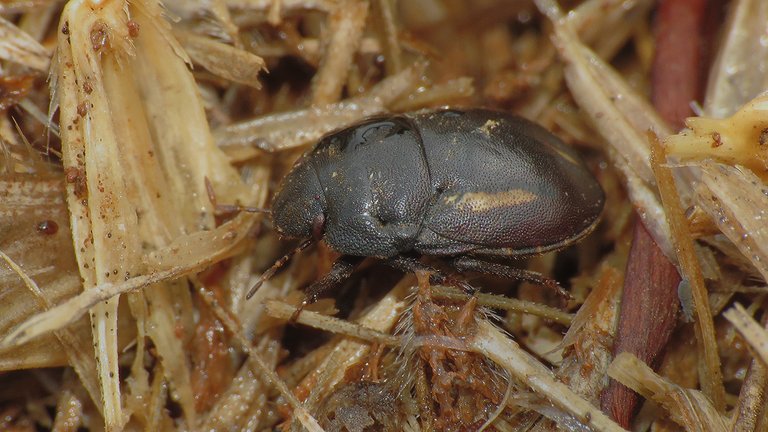
In this photograph, you can see one of quite a few bugs of the same species that found a nice cozy shelter in the pile of desiccated plant material brought here by the ants.
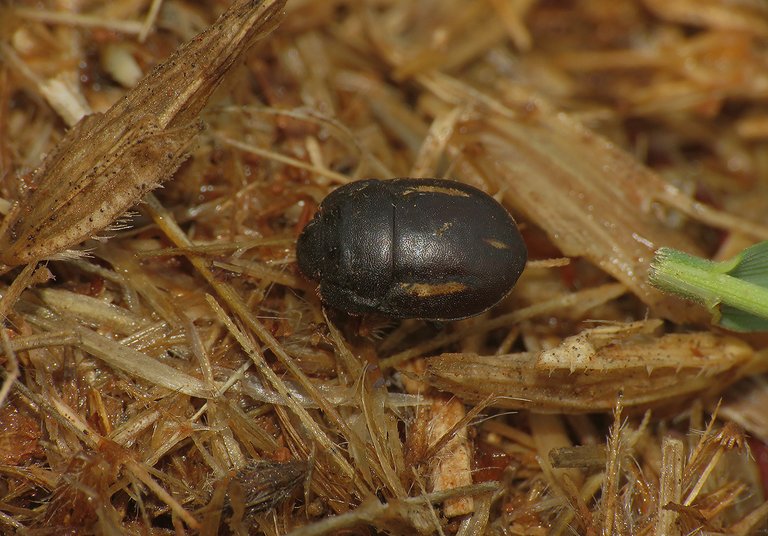
This is the Odontoscelis fuliginosa ...
... a bug from the Scutelleridae family.
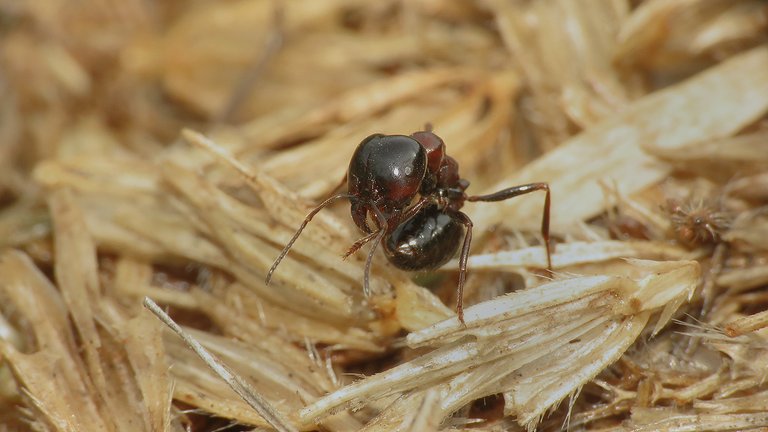
In this shot, a Messor wasmanni worker is cleaning its legs.
In the grass near the edge of the area cleaned by the ants ...
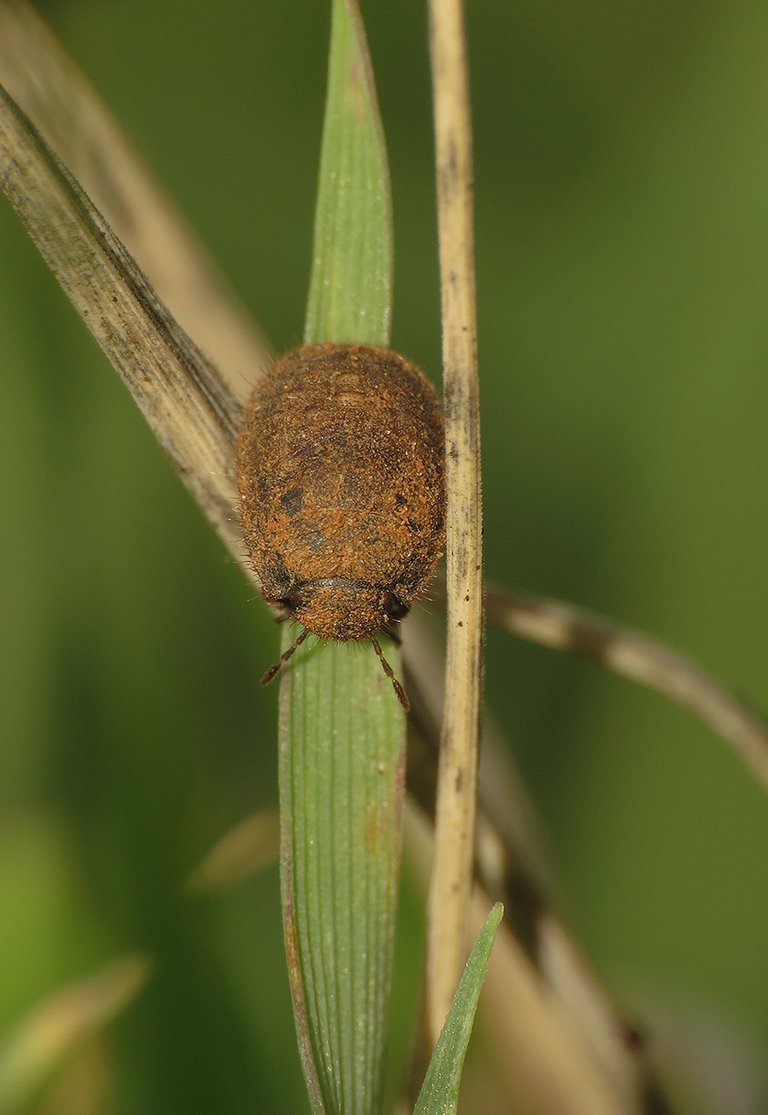
... I found an Odontoscelis fuliginosa nymph ...
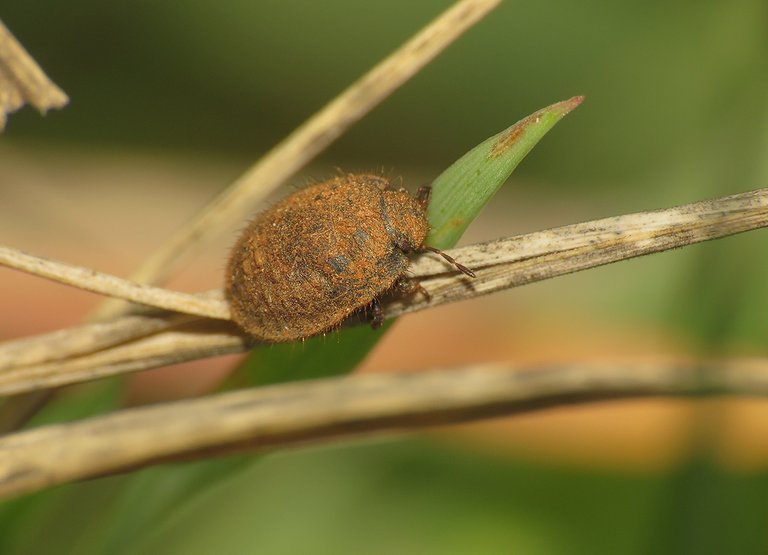
... so I can show you how this insect looks in its early stage.
Here you can take a look at one of the small trees that mixed with various shrubs and climbing plants form a green wall around the meadow. If you enlarge this photograph by clicking on it, you may notice a small white detail in its center.

With each new shot ...
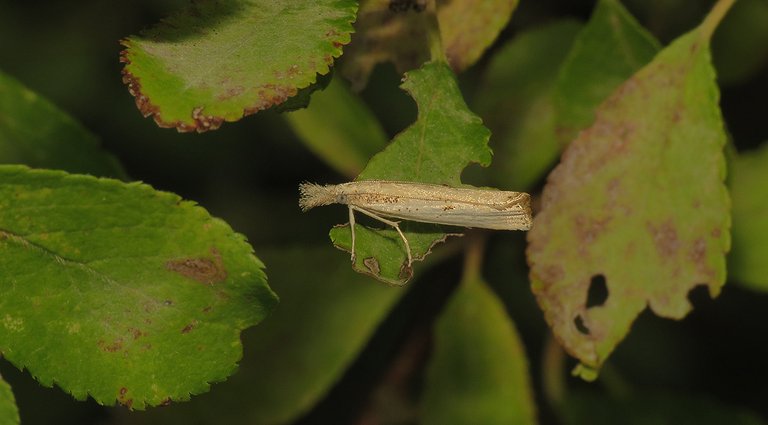
... I was getting closer.
In this photograph, especially if you enlarge the picture by clicking on it, you can clearly see that this is a moth from the Crambidae family. The genus is very probably Agriphila. It could be the Agriphila straminella. Maybe.
This is the Dichrorampha heegerana ...
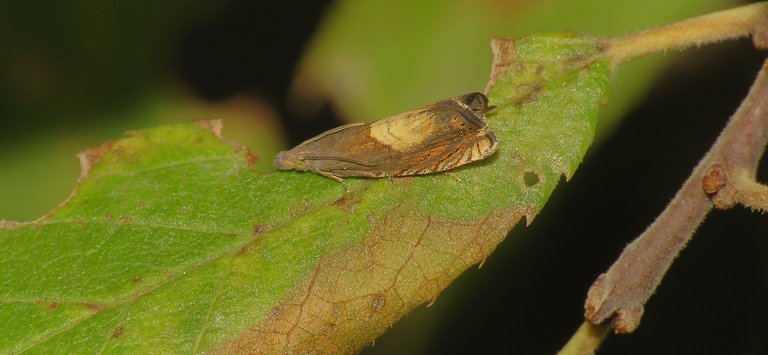
... a very small moth ...
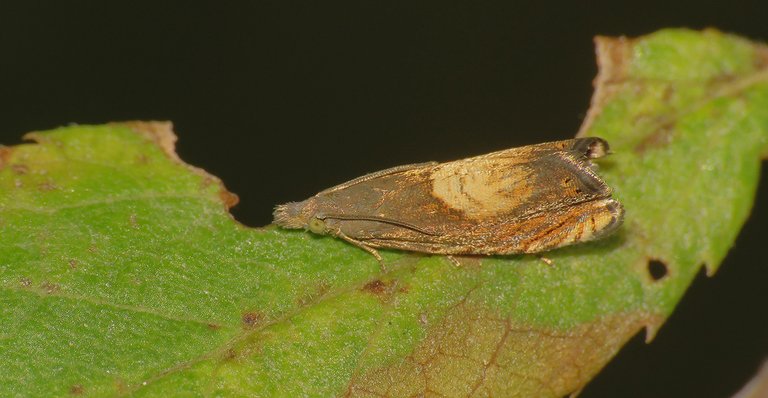
... from the Tortricidae family.
With each new shot ...
... I was moving further away from the insect. Both moths have been photographed on the leaves of the Prunus spinosa tree.
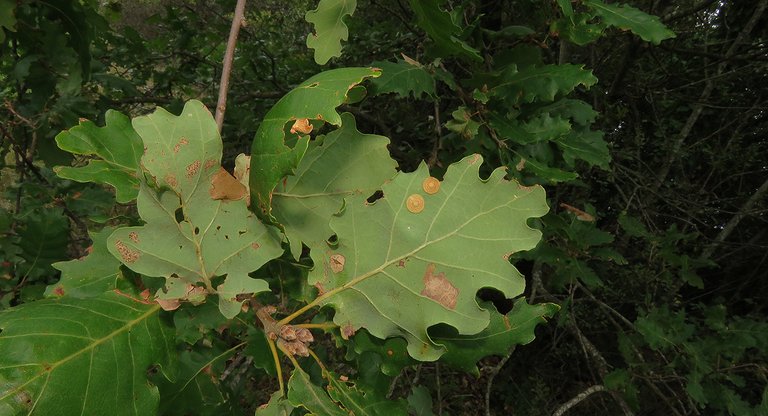
On the nearby oak (Quercus robur) ...
... the ants were tending the aphids ...
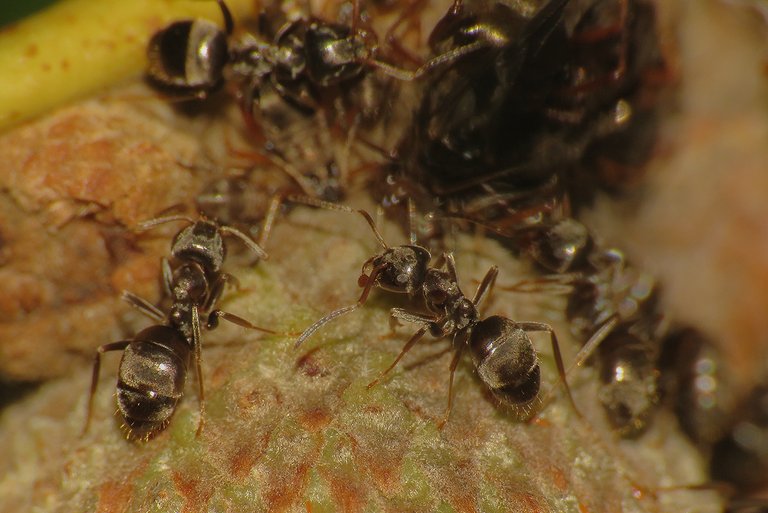
... in exchange for the honeydew that the aphids produce.
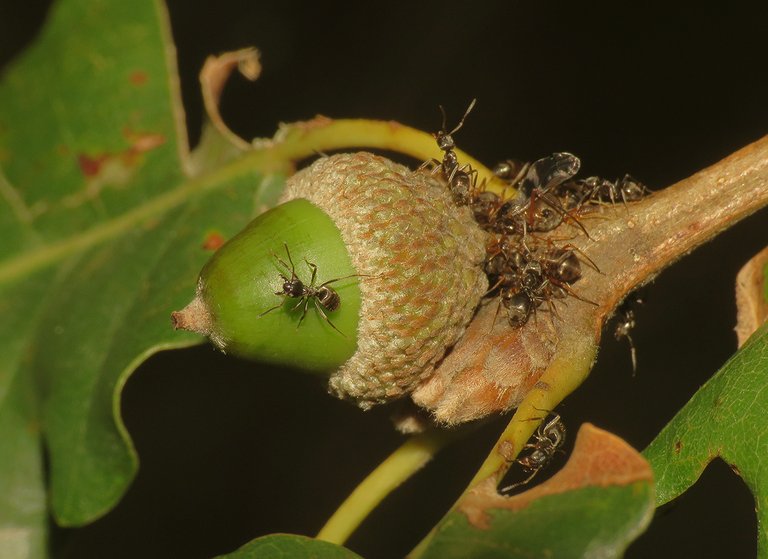
Lasius niger is the name of this ant species.
The scientific name of the aphids shown in this series of photographs is Lachnus roboris.
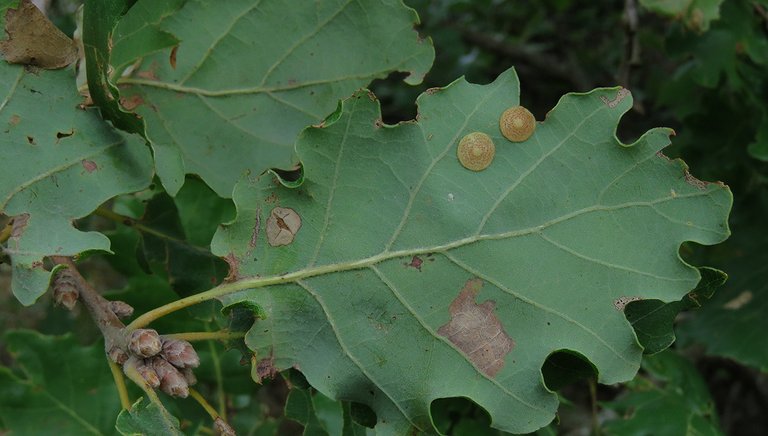
On the underside of one of the leaves ...
... I found two interesting circular formations that look like some kind of limpets.
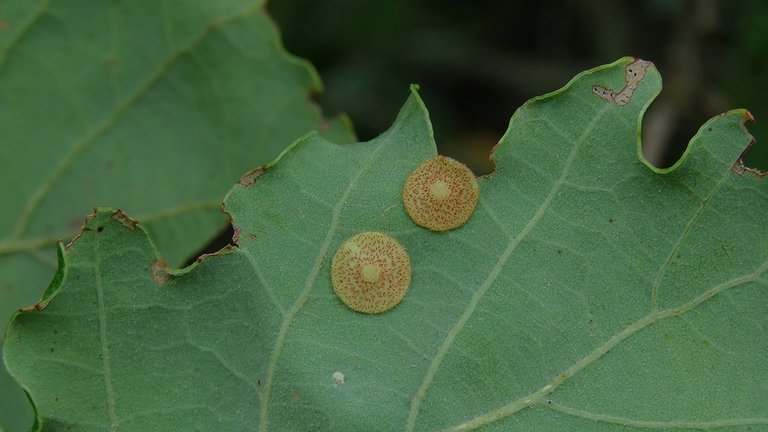
These are galls, produced by the tree in reaction to the chemicals injected by the Neuroterus quercusbaccarum, a tiny wasp from the Cynipidae family. The larvae are growing and developing inside these lovely, quite decorative discs. In the following photograph ...
... I picked a gall from another leaf, detached it from the surface, and overturned it to show you the other side of the coin.

This moth, from the Crambidae family, which may or may not be the Agriphila straminella ...
... was also found and photographed on the underside of a leaf on the same Quercus robur tree.
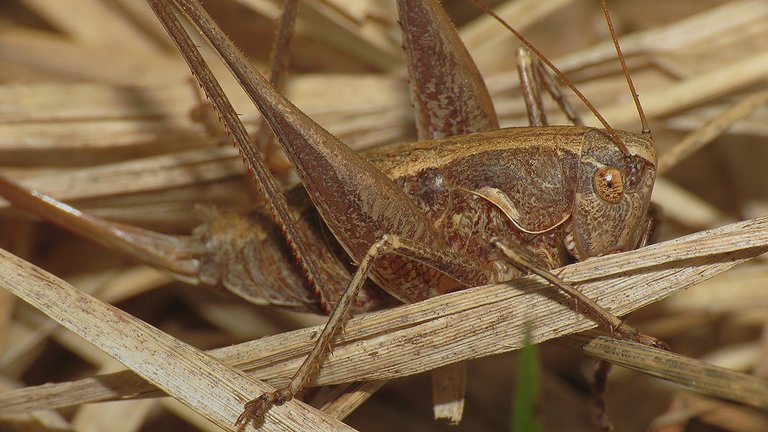
This well-camouflaged bushcricket ...
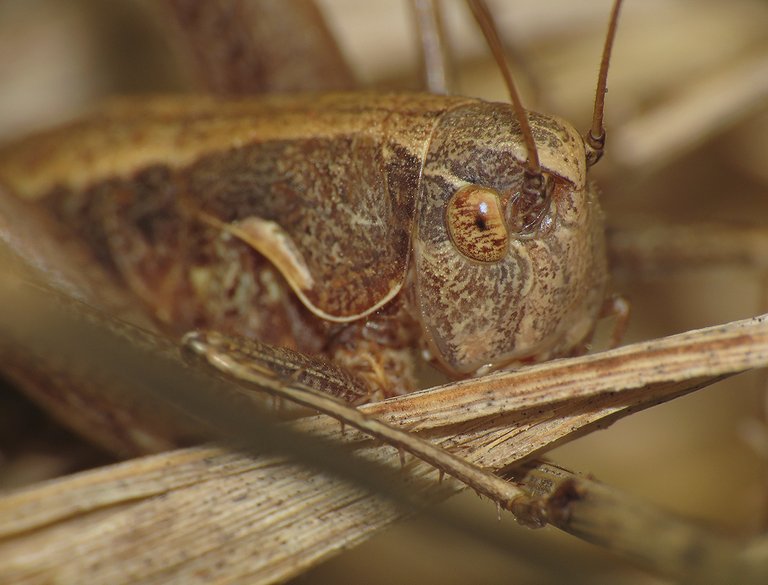
... was photographed in the dry grass under the line of shrubs and trees.
The name of the species is Rhacocleis germanica.
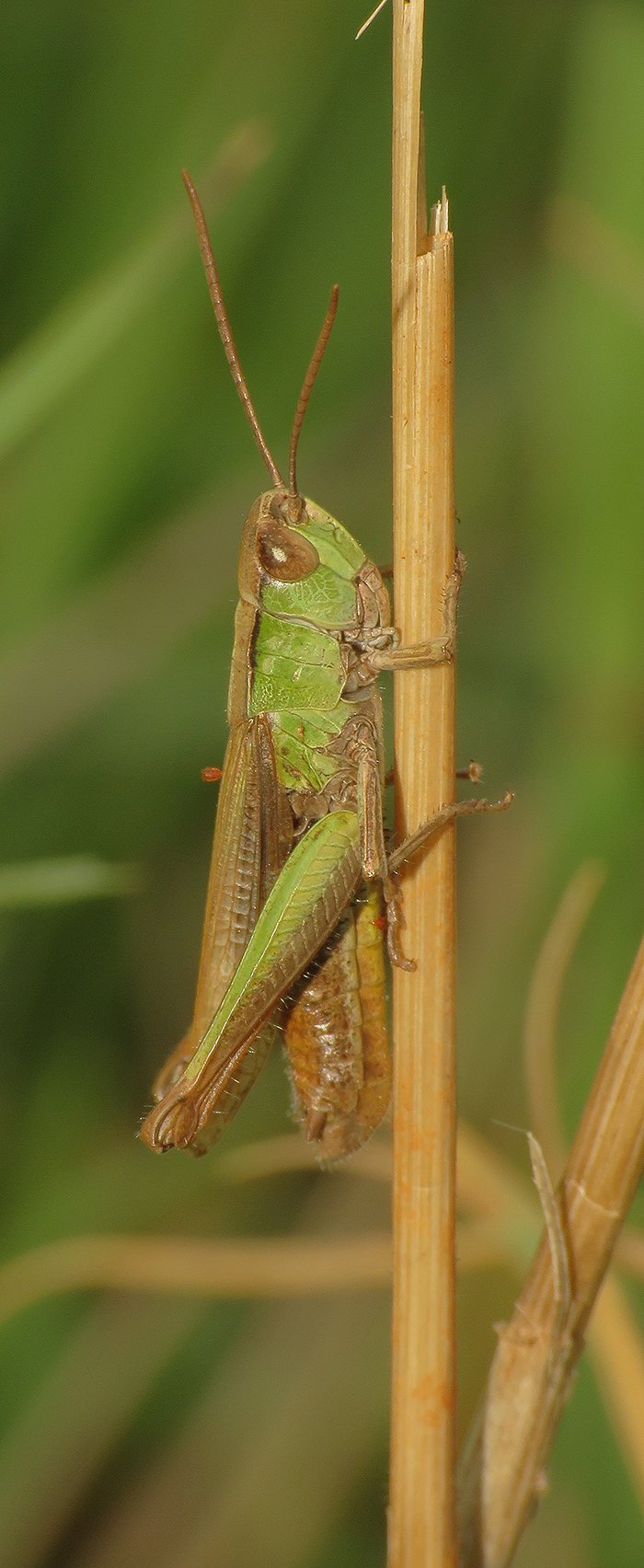
Five or six meters from there, in the prevalently green grass of the meadow, I found this beautiful grasshopper.
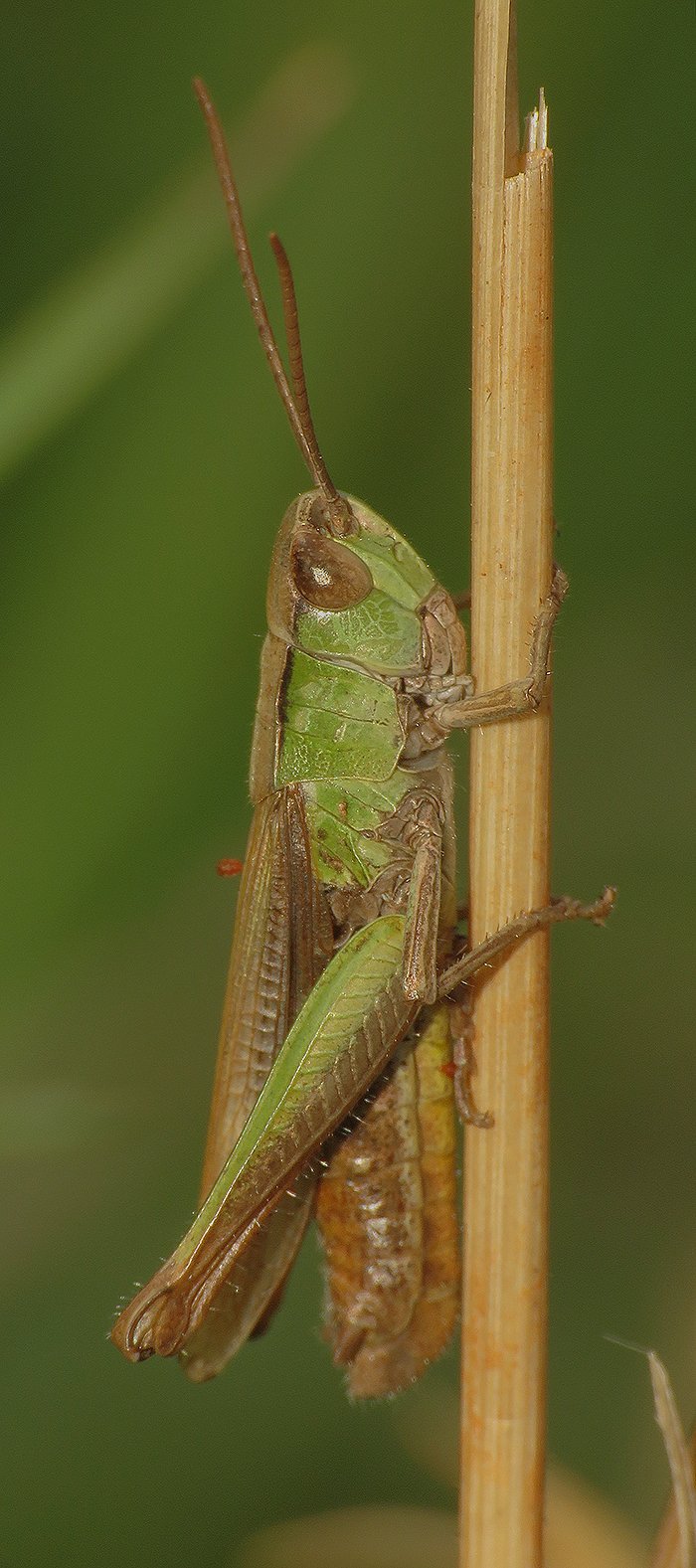
The family is Acrididae, and the genus is Chorthippus, but I can't tell you exactly what species is this. Quite a few Chorthippus species in this area look very similar and each species comes in a variaty of colors from black to brown and green, so there is plenty of room for confusion.
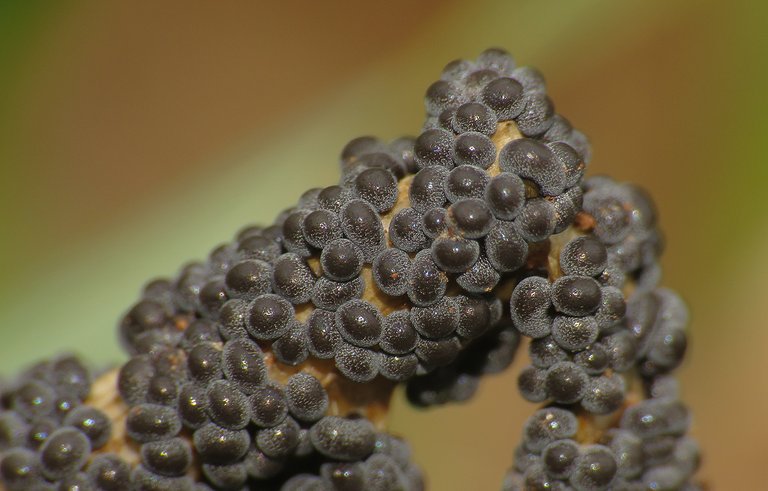
On another straw of grass not far from there, I found this thing that looks like a cluster of eggs.
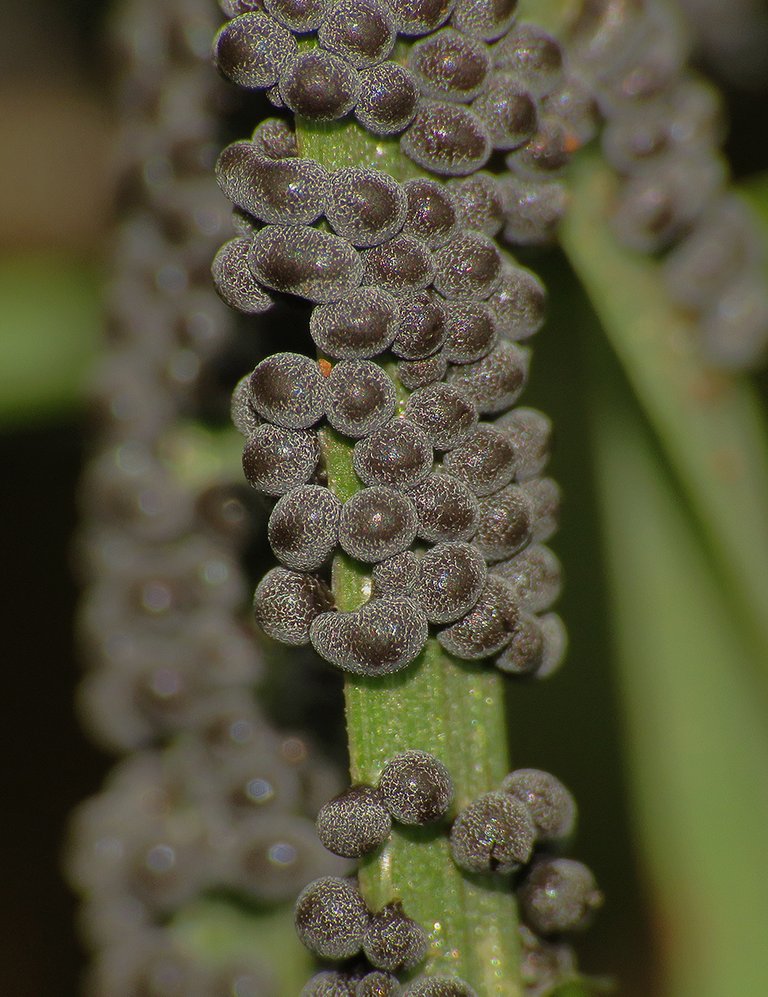
Today, after a quick Internet search, I found out that is a slime mold.
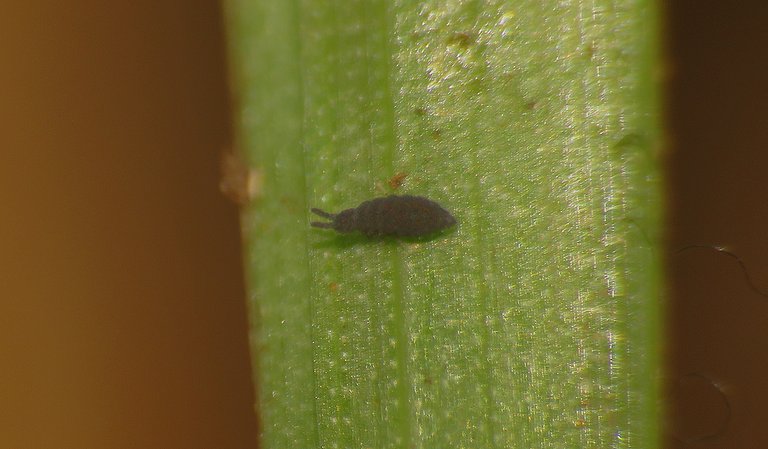
Very close to the slime mold, I found a minuscule springtail of the same color.
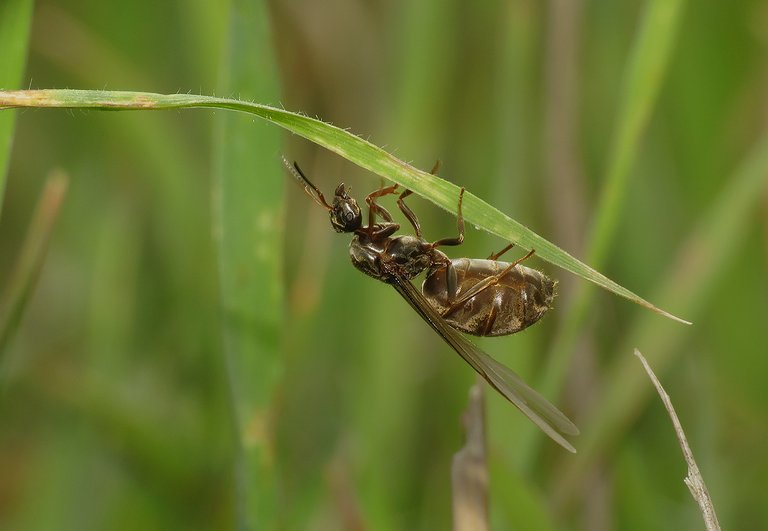
Here you can see a winged Lasius niger queen hanging on the leaf of grass.
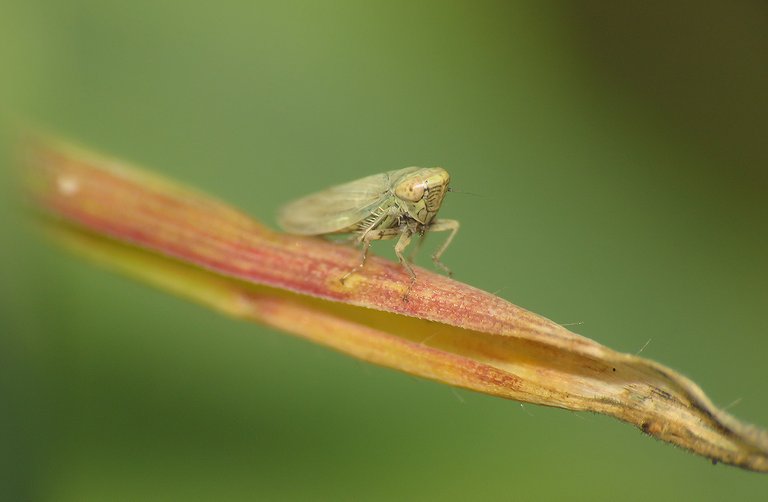
This very small leafhopper (Cicadellidae family) is resting on the upper side of a similar leaf.
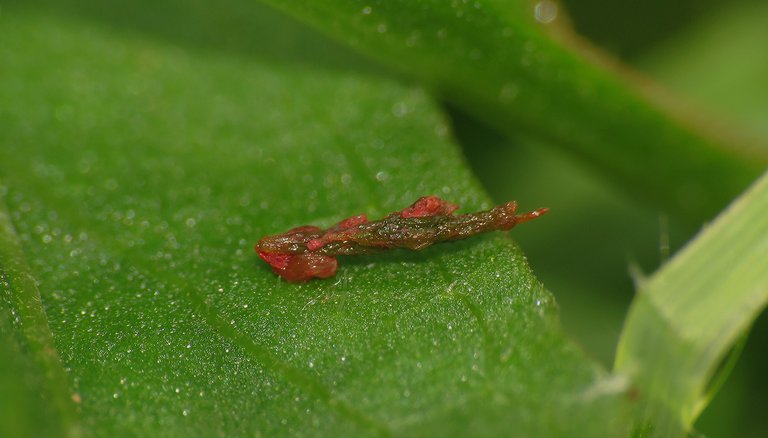
On the leaf of some small herbaceous plant that grows surrounded by grass, I found this tiny, mysterious fragment of something. I have no idea what this could be. Something extraterrestrial, maybe.
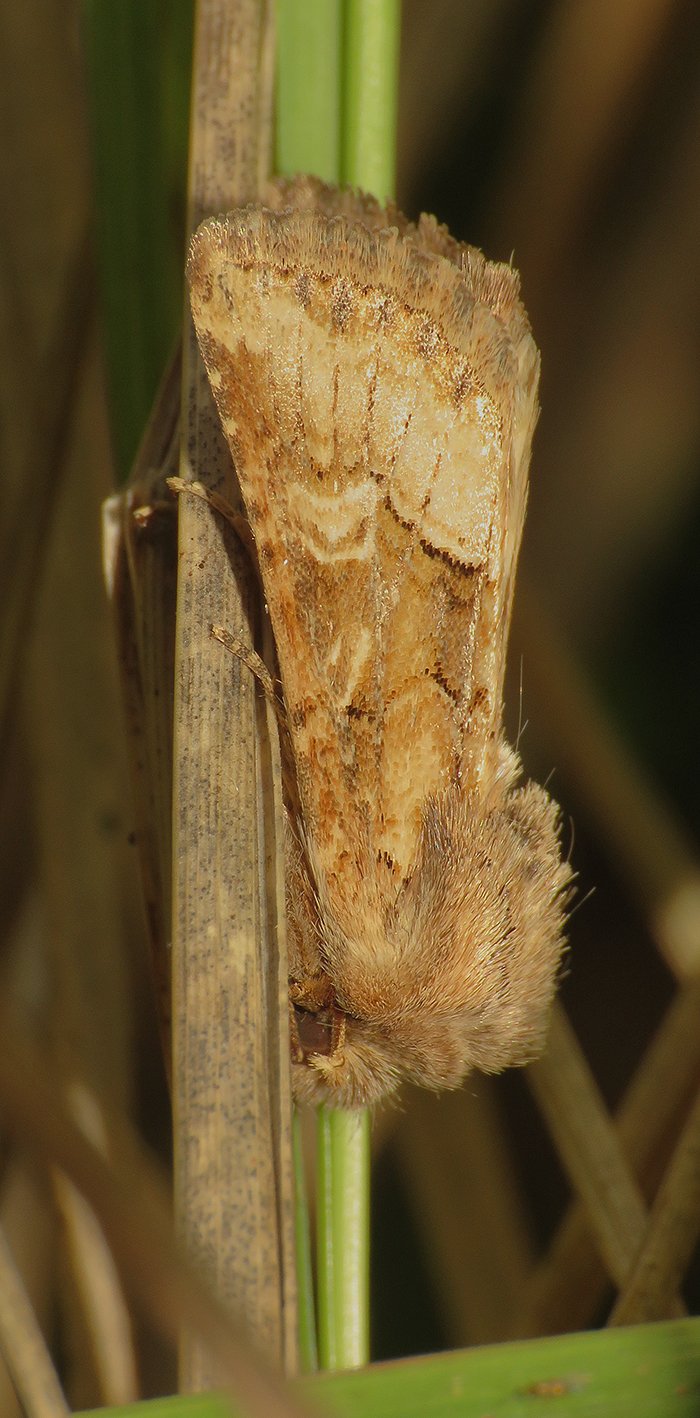
Here you can see another moth.
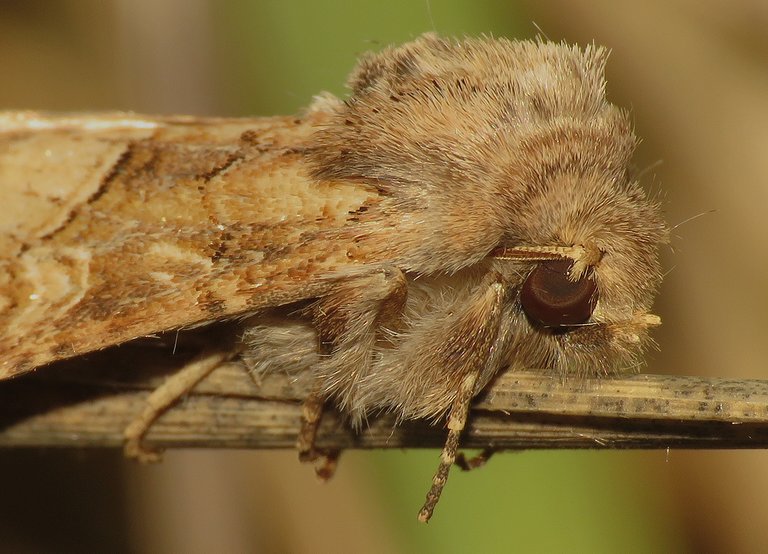
This one was much bigger than the Crambidae and Tortricidae moths shown earlier in the post.
It belongs to the Noctuidae family.
Can't tell you the name of the species. While I was photographing the moth ...
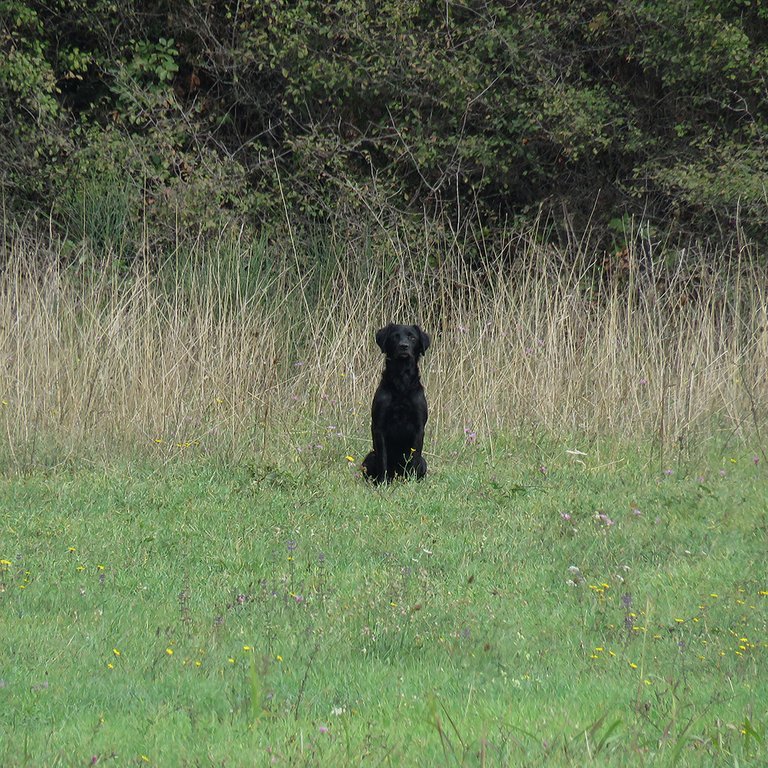
... a black dog was watching me from the opposite end of the meadow. I don't know where that dog came from. It just appeared like it was teleported. The Agaricus campestris mushroom, shown in the following photograph ...
... he's grown in the grass on the edge of the meadow, a couple of meters from my car parked by the side of the road.

And that's it ...

... after taking this portrait of a Pezotettix giornae grasshopper, I drove back home.
The following links will take you to the sites with more information about some of the protagonists of this post. I found some stuff about them there.
http://www.pyrgus.de/Maniola_jurtina_en.html
https://www.cabidigitallibrary.org/doi/10.1079/cabicompendium.11733
https://powo.science.kew.org/taxon/urn:lsid:ipni.org:names:506418-1
https://species.nbnatlas.org/species/BMSSYS0000005253
https://www.antstore.net/shop/en/ants/Ants-from-South-Europe/Solenopsis-fugax.html
http://www.pyrgus.de/Pezotettix_giornae_en.html
https://gobotany.nativeplanttrust.org/species/centaurea/nigrescens/
https://en.wikipedia.org/wiki/Convolvulus_arvensis
https://en.wikipedia.org/wiki/Lycoperdon_pratense
https://en.wikipedia.org/wiki/Agaricus_campestris
https://www.antwiki.org/wiki/Messor_wasmanni
https://www.inaturalist.org/taxa/750900-Odontoscelis-fuliginosa
https://en.wikipedia.org/wiki/Agriphila
https://en.wikipedia.org/wiki/Dichrorampha_heegerana
https://en.wikipedia.org/wiki/Quercus_robur
https://www.antwiki.org/wiki/Lasius_niger
https://influentialpoints.com/Gallery/Lachnus_roboris_variegated_oak_aphid.htm
https://www.naturespot.org.uk/species/spangle-gall-wasp
https://www.gbif.org/species/1694185
https://en.wikipedia.org/wiki/Chorthippus
AS ALWAYS HERE ON HIVE, THE PHOTOGRAPHS ARE MY WORK.
